Stack | Interview | Killer Heavy Psych from 1960’s LA
Stack was a wild heavy psych band formed in 1967 in Los Angeles, California. In 1969 they managed to release ‘Above All,’ an extremely rare record that is filled with ultra loud guitars and a fantastic rhythm section.
They signed a long-term contract with Mike Curb’s Sidewalk Productions and recorded an album in off-hours at local studios. Their sole album ‘Above All’ was released in 1969, but it was never marketed and very few copies of the finished album escaped from Sidewalk. This is our follow-up interview with vocalist Bill Sheppard.
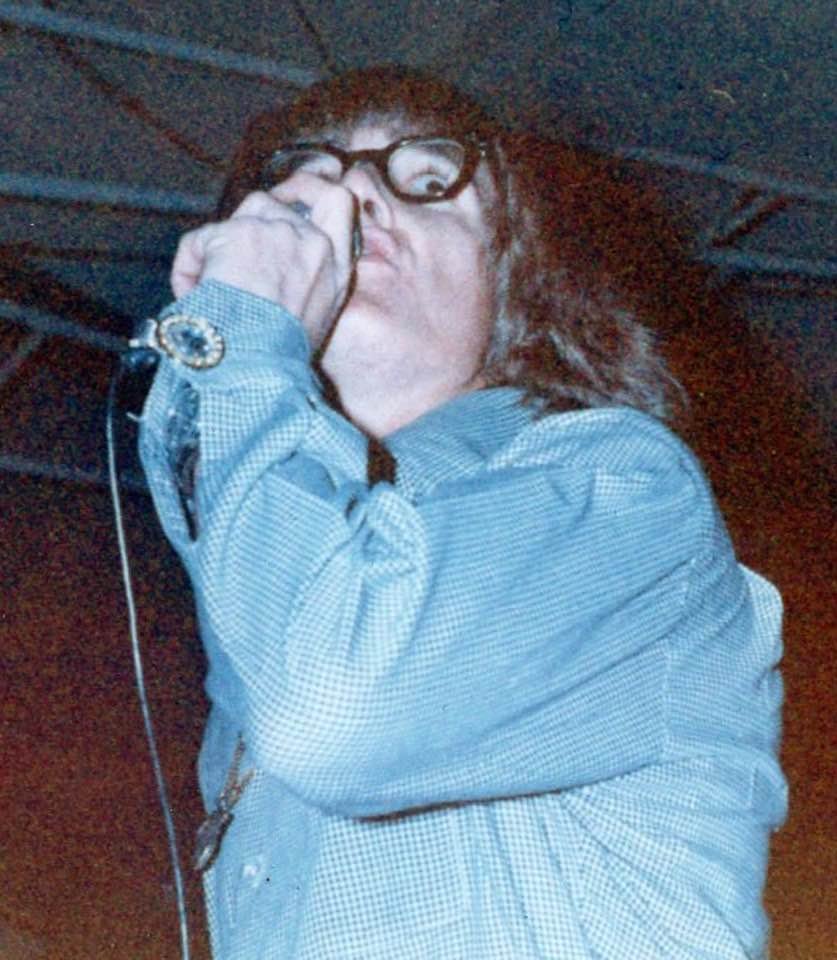
“We’d become a powerhouse, and the record no longer represented our capabilities!”
How did you first get interested in music? Was there a certain moment that triggered your obsession?
Bill Sheppard: My involvement in music was really a fluke. In my final year of elementary school I’d become very interested in math and hadn’t pictured myself involved in music at all. I had a limited choice of electives for classes in middle school (junior high) and chose the beginning band. My family on both sides had always been musical (my second cousin Fergie did quite well with Black Eyed Peas) at gatherings, and my acumen reflected that. I selected tenor sax because it was the lead instrument of our era as surf music was the Southern California pop music of the early ’60s. Our beginning band instructor was a noted “miler” of that era, Archie San Romani Jr. He was an excellent teacher and under his tutelage I progressed quickly. I must also give kudos to fellow sax (alto) student, Larry Riley (RIP), Larry was easily two years ahead of the rest of us as he’d been taking private lessons for a while, and it showed. Also, another member of the group, guitarist Larry Hernandez (nowadays a reverend) along with his brother, bassist Frank, had recently formed a rock band they called The Individuals and asked me to join as the sax player. It was late winter of 1961. Early Spring of ‘62 we played our first paid gig! I was still in 7th grade and I think I caught the performing musician bug at that first gig. I don’t believe it was ever really an obsession, it was more a road to freedom from parental guidance/control, and recognition of accomplishment from my peers and others, making a name for myself.
Would love it if you could tell us a bit about your upbringing. What was life when you were growing up?
The Sheppard family unit was oddly religious. My father, William Bernard Sheppard, was a bank VP, and practicing Christian Scientist. A good provider, but almost criminally negligent when it came to his children’s health care. His beliefs almost cost me my life at age 6. I’d come home from school with a sore throat and wasn’t taken to the doctor to have it checked. It was strep throat. Because I wasn’t treated quickly, my streptococcal infection graduated to rheumatic fever, and I was quarantined for a year! The condition left me with a heart murmur which ruined any plans I might have had about participating in organized sports activities. Nonetheless, every cloud has a silver lining. Because of the quarantine I couldn’t attend school, so my parents opted to bring in a tutor. Mrs. Collins, no relation to my mother’s side of the family, was an absolutely brilliant teacher, and solely responsible for my rapid growth in education and prowess in mathematics. She also contributed greatly to my self esteem which, returning to school a few years later helped me be selected from my 6th grade class to appear on the CBS Kids Say the Darndest Things TV show with host Art Linkletter, as a 12 year old. My physical condition also blessed me with the condition of asthma. I say blessed (silver lining), because it warranted me being ineligible for the armed service draft, smack dab in the middle of the Vietnam war where many of my friends were returning home in body bags. On the many days that I wasn’t experiencing symptoms, me and my neighborhood buddies hung out in the orange groves that surrounded our homes. We built forts, dugouts, and huts to shelter us and our found “treasures.” Occasionally, we’d throw oranges at passing cars, then run into the groove and hide from angry drivers, we remained unseen until they realized they were out of their element, and frustrated, retreated.
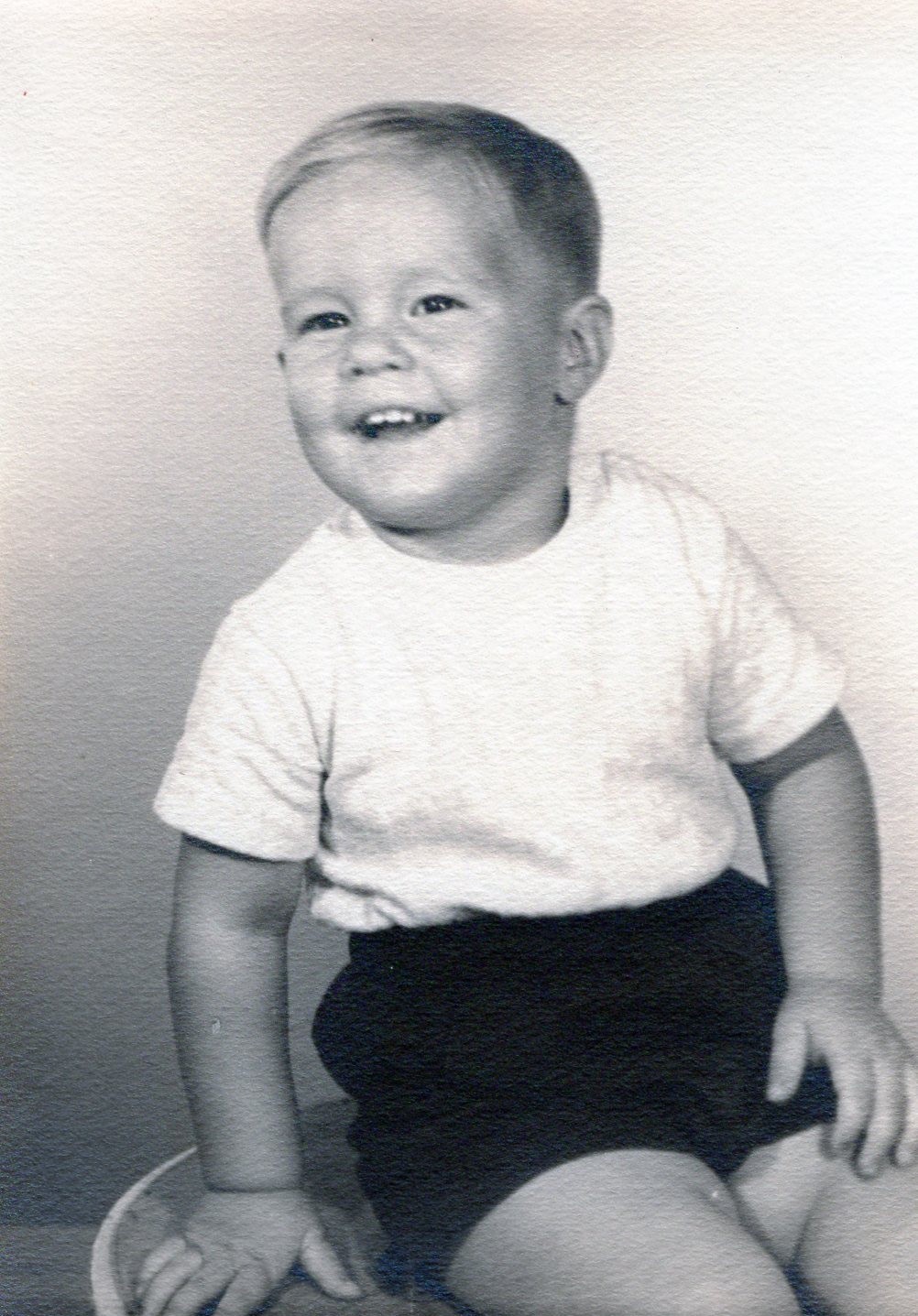
I had played sax with The Individuals for a few months when I was approached by classmate Russ Winstead to join a different band. Russ’ brother, Dennis Taylor (RIP), had just formed a new band with Russ playing bass, fellow guitarist Benny Maddox (RIP) (nephew of country artist Rose Maddox) on rhythm guitar, drummer Darryl Duey, and they wanted me on sax and vocals. Benny and Dennis were both in their early 20s. Dennis (Denny) drove a burgundy ‘57 Chevy with chrome wheels, Benny had a white ‘59 Chevy. They both played Fender electric guitars. Russ and I were both 14, Darryl was 13! I was living with my parents and under heavy scrutiny as my older sister, Sally, was a bit “wild,” which in turn brought additional pressure on me. I pictured a new level of “cool” coming into my life and jumped at the opportunity! Denny and the Chancellors was born! Within a few months we were booked as the “house band” at the Huntington Beach Pavilion next to the pier, and kept that gig until Benny was drafted into the army a year or so later. Enter guitarist Frank Moore. Along with Frank’s entry, we decided to change the band name to, The Crispy Critters! Frank was an excellent addition to the group and the same age as Russ and me. Just a quick recall, when we first began rehearsing at Russ’ mom’s house, I took a job a few doors down at the Hancock gas station. Gas was 25.9c per gallon, and cigarettes were 25c a pack. I showed up for work at noon on my first day with absolutely no concept of work ethic, length of shift, et cetera. Band practice was at 3 that afternoon. At about 5 minutes ‘til 3 I started walking towards Russ’ house. The boss came running out and yelled, “Hey kid, where do you think you’re going?” I responded, “I have band practice at 3!” That was my first day, it was also my last day at the Hancock gas station! As I stated a moment ago, Frank’s addition was a move in the right direction for us. We soon were the opening act at the Hullabaloo Club in Hollywood (later to become the Aquarius Theater). We opened for Mike Clifford, whose hit song, ‘I’m So Close to Cathy,’ was climbing the charts. The Hullabaloo was a unique venue as it had a revolving center of the stage. That particular nuance nearly ended in disaster for me.
Excited about our Hollywood debut, I stood on the edge of the revolving center of the stage, sax hanging around my neck, ready to rock, slowly turning into position facing the audience. With the stage lights brightly glaring, the MC introduced us and the audience welcomed us. I stepped off from the revolving to the stationary part of the stage before it had stopped completely, stumbled, and nearly took a nose dive into the front row with sax in tow. Regardless, we were well received. Soon afterward we became the house band at The Paradox in Orange, CA, sharing weekend nights with hypnotist George Sharp. The Paradox was a hip, avant-garde oasis in the midst of the John Birch Society’s stronghold, Orange County, CA. It was THE hangout, and frequented by the likes of Bonnie Raitt, Jackson Browne, The Nitty Gritty Dirt Band, Pat Paulson, and a host of others at the very foundation of American folk-rock! We landed that gig in my junior year of high school!
At the end of my junior year, my father got a job offer to manage the Las Vegas branch of Great Western Savings and Loan, and my folks decided to move to Las Vegas. I on the other hand was rooted musically and socially too deeply to even consider that move, so a family agreement was made that my older sister Sally, and her husband Mike Chamberlain would rent the family house, and I would rent a room from them. My sole means of income was my gig at the Paradox.
As I entered my senior year of high school, I was invited and accepted into the school’s Mozart Choir program and quickly became a soloist. For the Christmas program that year I was selected as the male lead voice for ‘Oh, Holy Night’. Big problem! The performance was to be on a Friday night. I was now paying rent unlike the majority of my classmates, and couldn’t afford to do the choir performance. I met with the choir director and explained my dilemma, but to no avail. He warned me that if I didn’t make the choir performance I’d be dropped from the group, and there may be other repercussions. I was a dedicated band member and knew it would affect the band negatively if I missed a show, on the other hand the choir had other soloists that could be used. I did my Paradox gig! Monday morning I was called into the vice principal’s office and immediately eliminated from the Mozart Choir. I had only needed a few class credits to qualify for graduation and because of my seemingly successful music endeavors I had enrolled in a “dummy” math class being taught by a gym coach. I’d envisioned myself just coasting through the remainder of high school. I’d more or less neglected my studies for a few years as I perceived them unnecessary, but my math skills remained sharp. The next day, during class, the “math/gym teacher” wrote an example on the blackboard that was mistaken, completely wrong. I approached the teacher (out of the classroom) and explained that his example was in error and offered to correct the mistake. He took it as a personal affront and asked me to report to the VP’s office. The following day I was removed from that class. The “story” that the teacher passed on to the VP was that I had physically threatened him! A complete and total lie! Nevertheless, I had now lost access to both class credits and was in jeopardy of not graduating. There’s always a silver lining and this one showed up in the guise of an auto shop teacher. Mr. Cruzberg was a cool, “on the edge of conformity” kind of guy. The faculty scuttlebutt had spread about me being a problem, and Cruzberg saw an opportunity! He summoned me to the auto shop office and made me an offer. If my band would donate two shows as benefits for the auto shop, and I agreed to run for donuts and cigarettes for him during classes, he’d cover the class credits I needed to graduate. We agreed, shook hands, the band did the benefit shows, and I graduated! Thanks Mr. Cruzberg!
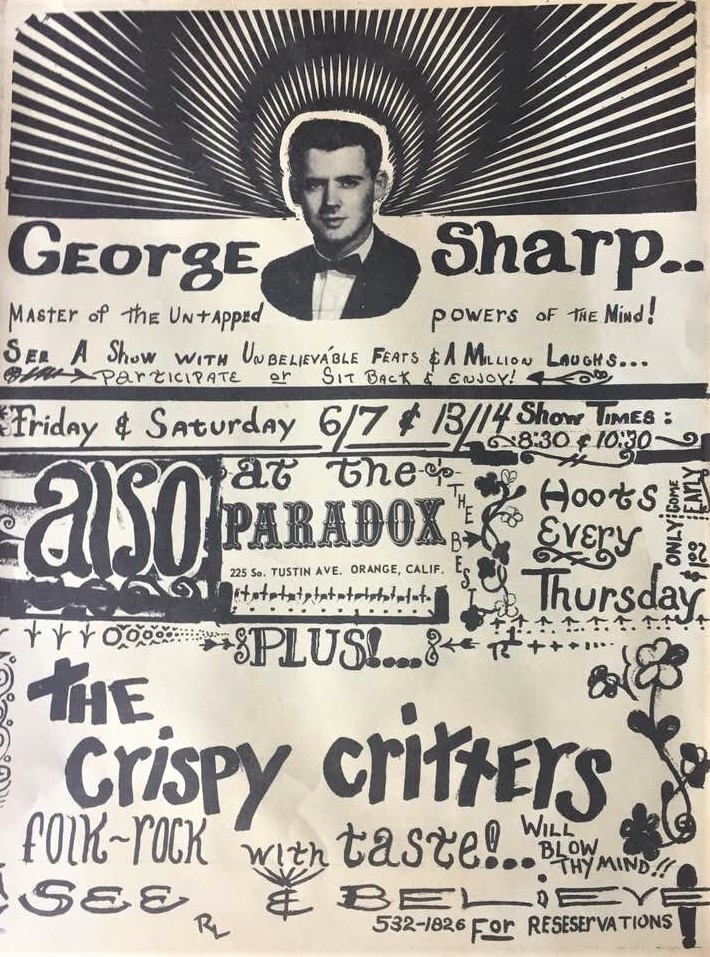
Tell us about your teenage years and early adulthood, were you located in Orange County? Were you part of any music scene back then? Did you have certain places that you loved to hang out? What bands did you see back in those days?
In my early teens, when we weren’t gigging, we spent our Saturday nights at Disneyland. It cost $2 for entrance. In those days there was a strict dress code and long hair on men was a big no no! At the entrance to the park, there was a restroom. On most weekend nights, you could find many of us long haired youth wetting our hair down in order to pass security and gain entry. Local Anaheim PD officer Posey interrupted a few of our attempted visits. A decade or so later I remember hearing he’d become a defense attorney representing those whose behavior had graduated to a more legal level. Once inside there were two top destinations for music; The Tomorrowland Space Bar featuring Kay Bell and the Spacemen whose notable members included guitarist Barry Rillera (Righteous Brothers, Ray Charles, White Trash), drummer Butch Rillera (Redbone), and bassist Jose Silva (The Righteous Brothers), and Frontierland featuring Gary Lewis and the Playboys whose members included guitarist Larry Carlton (Jazz Crusaders, Steely Dan), keyboardist Leon Russell, and guitarist Lee Ritenour among others. If one chose to wander about the park, you could drop into Fantasyland and catch the Clara Ward gospel singers or at the Carnation stage outside Snow White’s castle where one might find Duke Ellington and his orchestra. Close by, you could also watch for your favorite pop groups across Harbor Blvd. at Melodyland Theater, where I got to see; Ray Charles, Simon & Garfunkel (they were magical), Big Brother and the Holding Company with Janis Joplin (they were awful), Sergio Mendez & Brasil ’66, and many others. Across Katella Avenue was the Anaheim Convention Center where I also saw Jethro Tull, The Bee Gees with a 50 piece orchestra, Vanilla Fudge, and many many others.
Looking from today’s perspective those were really different, special times for being a musician, weren’t they?
We were well respected, honored, held in high regard, looked up to, and treated as if we were special, pseudo-celebrities. It was a magical time to be a musician, yes…
Did you play in any bands before forming Stack? Anything recorded?
Let’s see, first of all, the original version of Stack was formed by Rick Gould (lead guitar, vocals) and Kurt Feierabend (rhythm guitar, vocals), Kirk Henry (bass), Robin “Rob” Williams (drums), and Jim Dole (lead vocals). Here’s a quick timeline of the bands I was a member of:
1962-63 – The Individuals – with Larry and Frank Hernandez, Artie Perez
1963-65 – Denny and the Chancellors – with Russ Winstead, Dennis Taylor, Benny Maddox, and Darryl Duey
*Recorded – ‘The Cat Came Back’ 45 rpm
1965-67 – Crispy Critters – with Russ Winstead, Dennis Taylor, Darryl Duey, and Frank Moore
1967-68 – The Fabs – with Bob Ellis, Buddy Clark, John Skelton, and Dennis Yarema
*Recorded – ‘Dinah Wants Religion’/’That’s the Bag I’m In’ *before I joined the band – Bob Burton vocalist
1967-68 – Wabash Spencer Band – Bob Ellis, Buddy Clark, Dennis Yarema (guitar), John Skelton (guitar and vocals), Bill Sheppard
*Recorded – ‘Somewhere Between Time and Space’ and ‘French Champagne and Caviar’ at Gold Star Recorders
*Recorded – ‘Part Time Woman’/’French Champagne and Caviar’ 45rpm on Bel Air Records with Jim Messina
1968-69 – Stack – Bob Ellis, Buddy Clark, Rick Gould, Kurt Feierabend, Bill Sheppard
*Recorded – ‘Above All’ finally released on Charisma Records
*Filmed – Pepsi Cola TV commercial to coincide with Columbia Records, album release that fell through due to bad management negotiations
1970 – Sheppard and Moore duo
*Recorded a folk music album with Frank Moore for Stack producer Clancy B Grass III, Pat Boone, and Jack Spina (never released)
1972 – Ruby Wheeler – James Clyde Lutrell, Rick Gould, Dennis Lapore (Blues Magoos), Leon Becken (El Chicano), John Durzo (Strongbow), David Mohr (Davey Allen and the Arrows) and Bill Sheppard
*Recorded 4 studio cuts and 6 “rehearsal” cuts. John Durzo and I are attempting to release an album of this material presently!
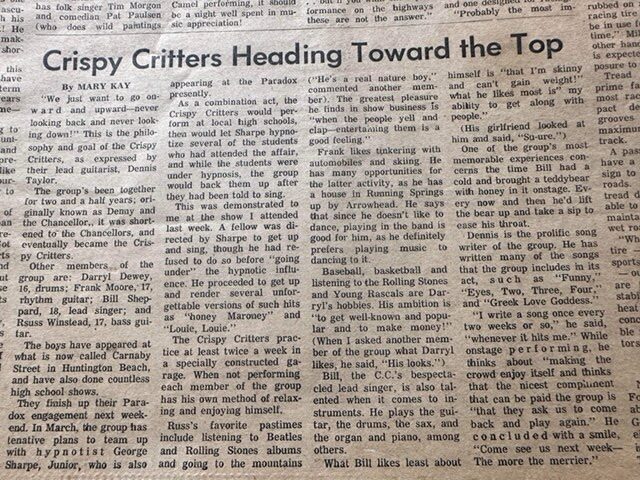
Tell us about The Fabs, a group that featured future members, Bob Ellis and Buddy Clark of Stack. What about The Barons, that was an even earlier band, Buddy Clark was part of?
Our band, The Crispy Critters, was playing our regular “house gig” at the Paradox. The Fabs members, aware that their singer, Bob Burton, was leaving the band, had begun a replacement search for a lead singer. Perfect universal timing had it that a lawsuit by an audience participant’s injury during Hypnotist, George Sharp’s show, and a change in ownership, had the Paradox closing. Which meant our gig was over! I received a call from Bob Ellis asking if I’d like to audition as the singer for The Fabs. Buddy Clark’s twin sister Kathy had been the president of the Denny and the Chancellors’ fan club, so she may have put in a good word for me! The audition went well, and they asked me to join on the spot. Secondly: As an active musician for many years before joining the Fabs boys, my weekends were very busy, and awareness of other venues and bands was primarily myopic. So, I know less than most researchers about Buddy’s past associations, sorry I can’t be more helpful here…
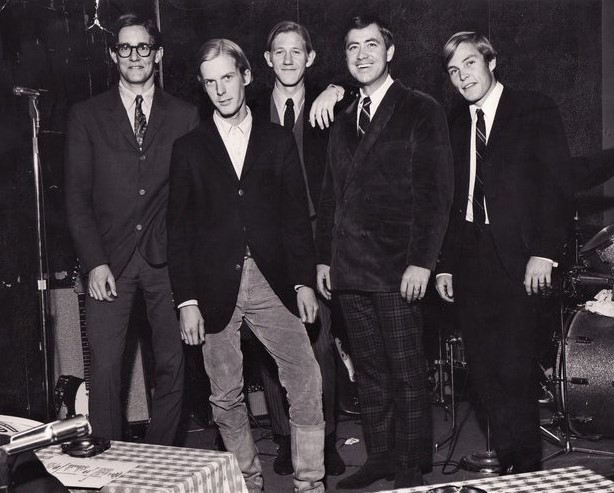
How and why did The Fabs morphed into The Wabash Spencer Band? When did you join them?
The Fabs had recently won the Pepsi Cola sponsored battle of the bands in Hollywood, the equivalent of the day to winning American Idol. They also had their 45 rpm “single” on Cotton Ball Records, getting airplay with Bob Burton’s voice and style as the image of The Fabs. Something had happened with Bob that eliminated his ability to stay with the group. In a previous interview I suggested that there may have been drugs involved or that he may have passed away. I heard from a family member following that interview, and was informed that my information was not accurate. I apologize/apologized for my misunderstanding and vow/vowed to set the record straight, so I hope this writing helps to dispel that unintended rumor! So, Bob’s voice and persona had become synonymous with the “Fabs” name. After I’d passed the audition, the group as a whole decided to market the “new” group with a new name, and new recordings. We then booked Gold Star Recorders and cut, ‘Somewhere Between Time and Space,’ and ‘French Champagne and Caviar’. At that session, a young musician/producer (Jim Messina) met our soon-to-be manager, Earl Deon, and discussed introducing a new record label. Messina had been shopping material he’d written and recorded, and he and Deon came to agreement that, The Wabash Spencer Band would release a single (45 rpm) on their newly formed Bel Air Records label which would include our freshly recorded, ‘French Champagne and Caviar,’ and a Messina penned tune, ‘Part Time Woman’. To help match the material sonically, John Skelton, Buddy Clark and I were “dubbed in” doing background vocals on the existing Messina tracks, Messina and Earl went back in and tweaked the EQ, compression, and reverb on both tracks to match as closely as they could, and voila! We had our record!
The Fabs had recorded, ‘That’s the Bag I’m In’ / ‘Dinah Wants Religion’. Tell us about those two tracks.
Because those tracks were recorded before I joined the group, I’m not familiar with their recording, writing, or performance. What I do know is that some of the performers continued on. Rob Kammack (keyboards) is still playing and I see his name occasionally mentioned locally. John Skelton recorded and released a record on Bil-Mar Records (Billy Davis Jr and Marilyn McCoo – 5th Dimension) under the name John Skelton and Hot Goods. The song, ‘Georgia Lady,’ caught John in his best voice and featured his excellent flute playing. I’ve been out of touch now with John for more than 40 years.
Their original singer Bob Burton had recently died of a drug overdose. He must have been very young and that was in times when drugs weren’t that much part of the scene..
As I noted earlier in this interview, I’ve apologized for any misunderstanding that I may have previously contributed to this rumor. Being misinformed and spreading that misinformation hurts people on the fringe. I apologize!! I do talk about some of my personal drug use though, elsewhere in this interview.
But of course you recorded material even before with Denny and the Chancellors in about 1964. Where was that single (‘The Cat Came Back’) recorded and released?
There was a place in Garden Grove, CA, Engler Studios that was a small, self-contained recording outlet where you could record, mix, and cut a vinyl disc (45 rpm) on the same day. That’s where it was done. There was a folk-singer at the time, Tim Morgan, who had an LP out, ‘Live at the Prison of Socrates,’ that included that song. We doctored the song, surf music style and recorded it with lots of reverb. It was never released. BTW – the Tim Morgan LP also had a haunting tune on it called, ‘Joey’ . My first daughter, born February 14th 1970 is named Joey Rain.
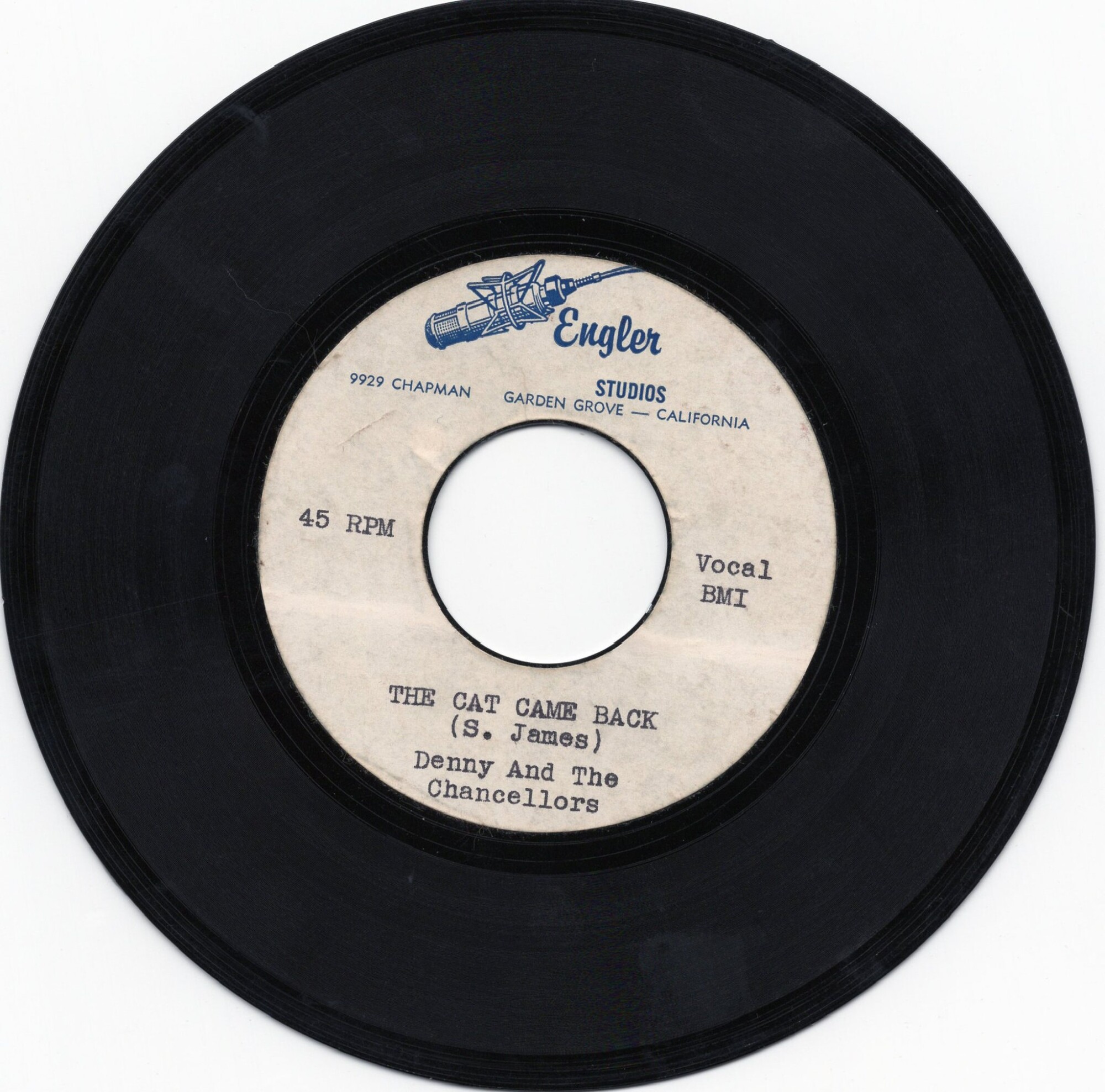
Back to pre-Stack days, tell us about The Anaheim Bowl.
I found through correspondence on Facebook, that a previous member of my very first band (The Individuals), keyboardist/singer, Al Valdez, started the Monday night dances at the Anaheim Bowl. Al and other members of his band , The Electras had rented a hall at the Anaheim Bowl complex to throw teen dances. They’d handled all the permits, insurance, and security requirements. They self-promoted the first few months and were very successful. As I’m told, Anaheim Bowl management then decided to handle the dances on their own and hired a manager to handle the door and security, eliminating the originators completely. It was the only teen dance around besides Harmony Park ballroom on weekends. The manager they hired for the Monday night dances was Mike Pinizzotto. Mike was the existing manager of an all girl group called, The Daisy Chain, later to change their name to, Birtha. Mike had also taken on a new teen club in the same location as the former Paradox, called Merlin’s. He had also recently signed a management deal with a new LA county group – Stack.
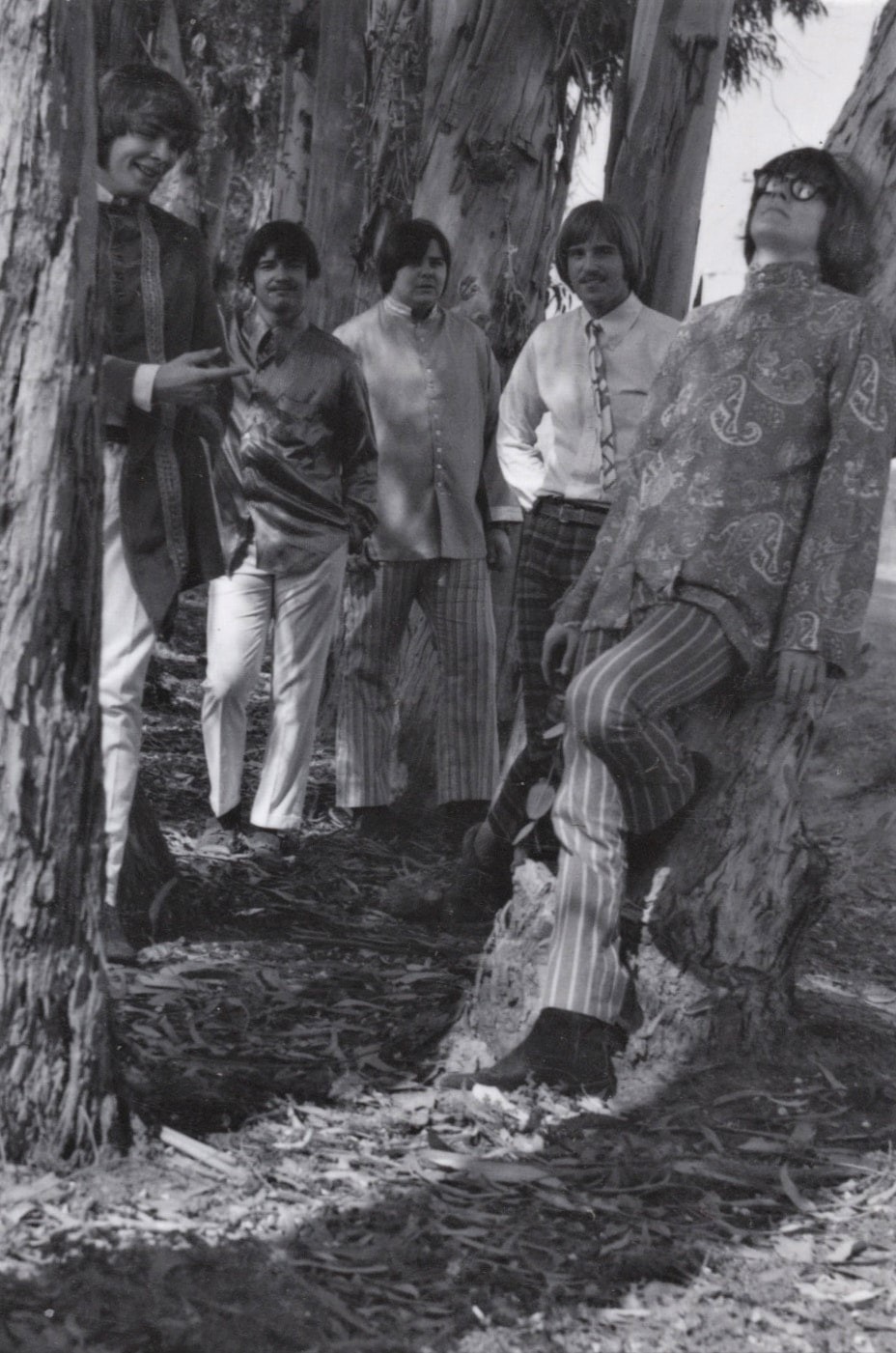
Wabash Spencer became a “house” band at the Anaheim Bowl. What did your repertoire look like and what bands that you shared stages with?
I’ll have to undergo hypnosis to dig some of this up (haha)!
The Bee Gees tracks (pre-‘Saturday Night Fever’) like ‘To Love Somebody,’ ‘I Started a Joke,’ ‘Words.’ Then also ‘Purple Haze’ by The Jimi Hendrix Experience…’Foxy Lady’. We also played ‘Keep on Running’ by Spencer Davis, ‘Look Through Any Window’ and I’m Alive’ by The Hollies, ‘I Can See for Miles’ and ‘The Kids Are All Right’ by The Who
‘The Kids Are All Right’ and many more of the era
Other groups we played with there that I can remember were: Elm Street Hotel, The Adey Brothers, Stack – once Poor memory enters… I do have to credit, lights, strobe, and fog machine to Bob Tamm, as he contributed greatly to the infectious vibe and success of Monday nights. Thanks Bob!
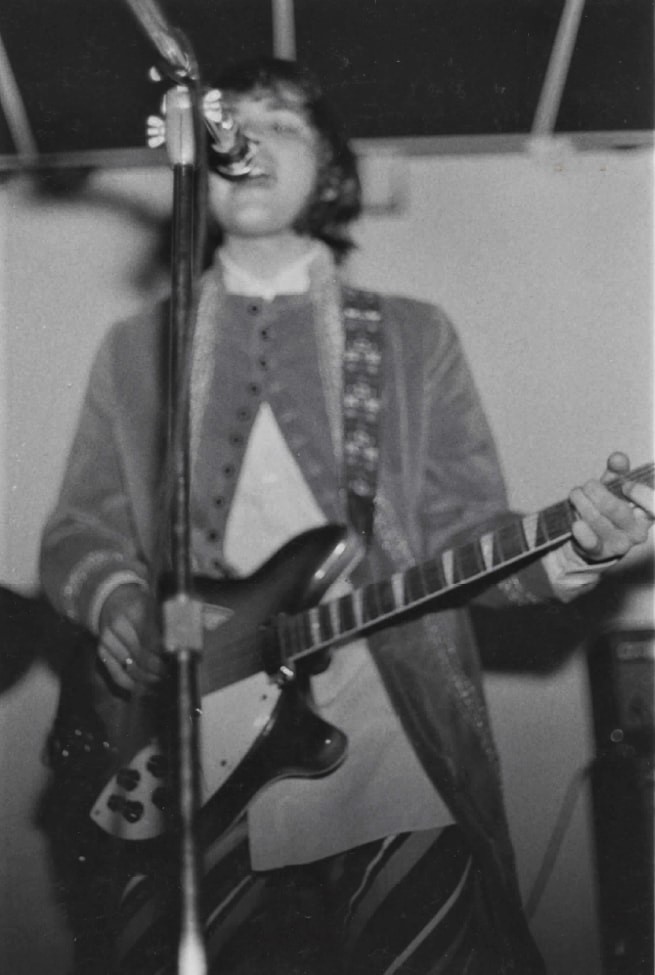
Tell us how did the Stack members sound early on, before you and Bob Ellis joined and how did that come about?
One aspect of the pre-merger Stack was that they had chosen great material, mostly The Who, and Cream stuff, and they played it with authenticity, both vocally and instrumentally. So did we. Their choice of material however, was a few months more timely than ours which indicated that they were aware of what was happening in the industry. Rick copped Clapton riffs and hand vibrato perfectly, and Kurt had a Neal Young vibe that was very “now.” Pinizzotto very well could have had a merger in mind when he brought them in, but we’ll never know since he’s passed on.
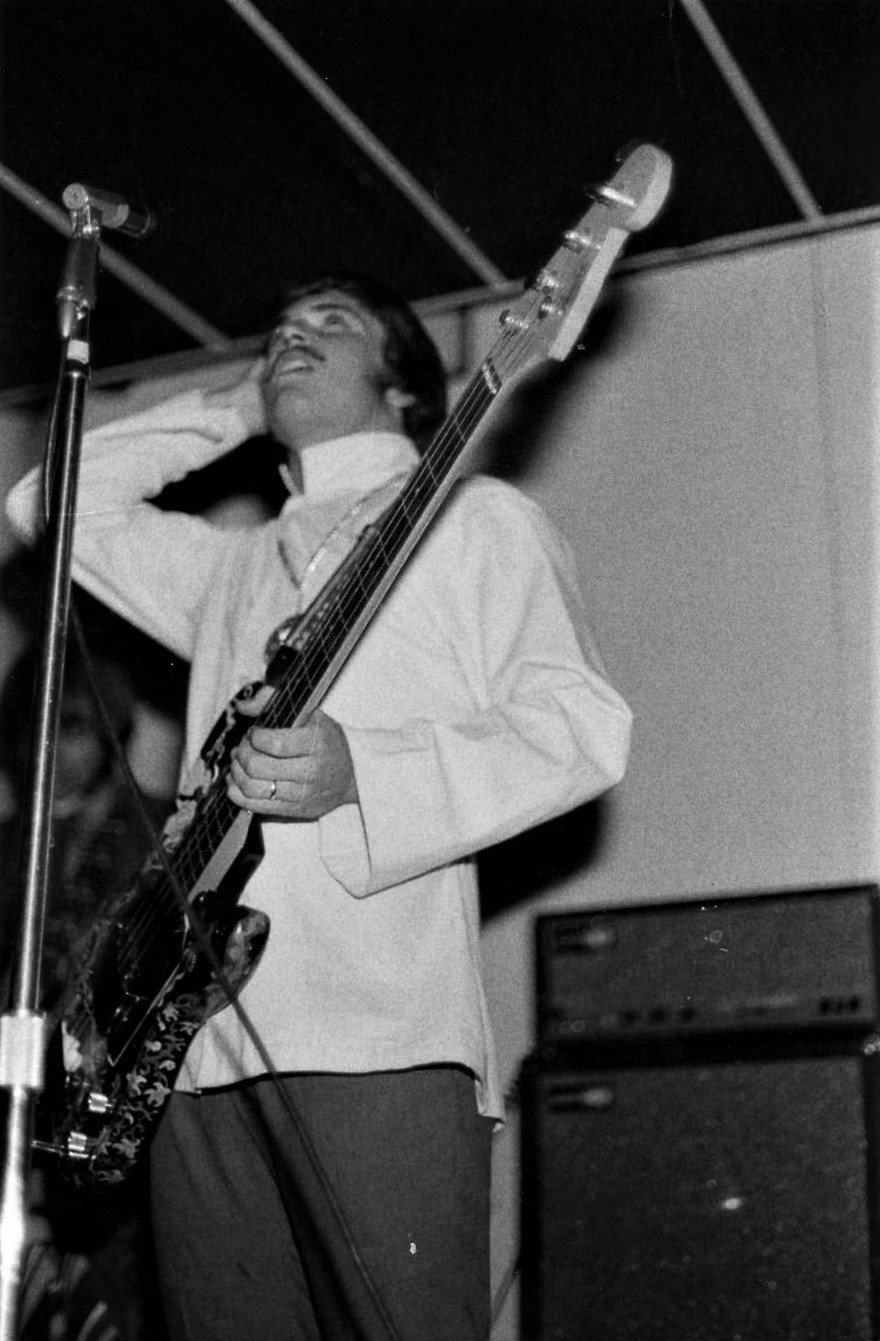
Tell us about Mike Pinizzotto. What was he like?
Mike was a physically large human being, 6’5” and about 250 lbs. He had a comfortable and confident demeanor, and was very friendly, even charming. I have to comment at this time, and that without Mike, Stack, as it ended up being, would never have existed. He seemed to be a loner of sorts, who spent most of his time promoting the bands he handled, or watching over the two clubs he was managing. After merging with Stack, Mike made extra efforts to put us all together away from venues and instruments, so we could bond as people. We spent a drunken night in Tijuana with him, culminating with an overnight stay on the stage at Merlin’s, and a few days’ tent camping trip at the Colorado River in Parker, AZ. I never met any friends of his outside of our business.
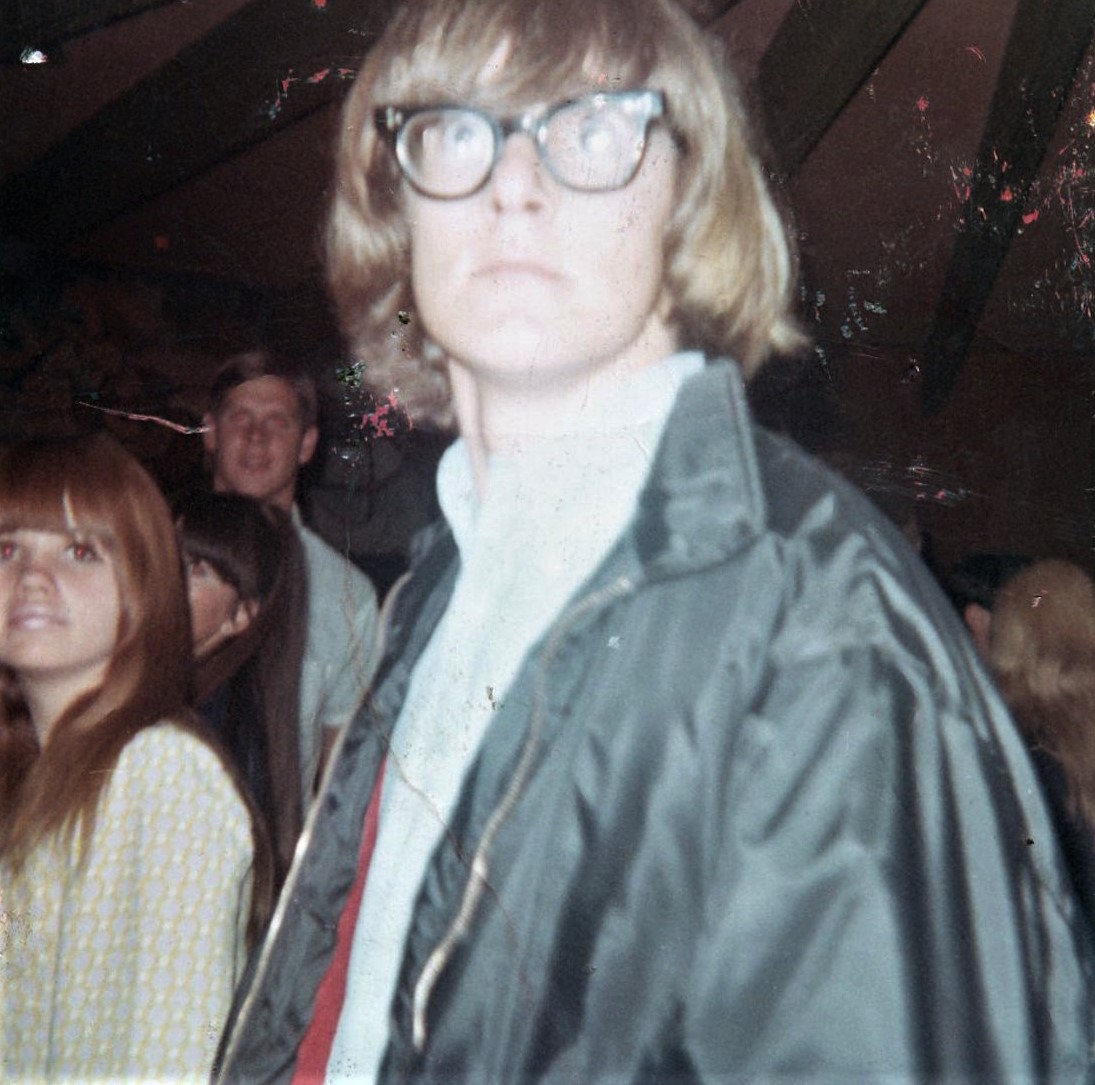
Did the group Birtha release any records?
Sure they did! They released LPs on Dunhill Records in both ‘72, and ‘73. They were very popular and successful. Lefty bassist Rosemary Butler was there since the group’s inception and became a well known background vocalist on records for Jackson Browne, Bonnie Raitt, and many others.
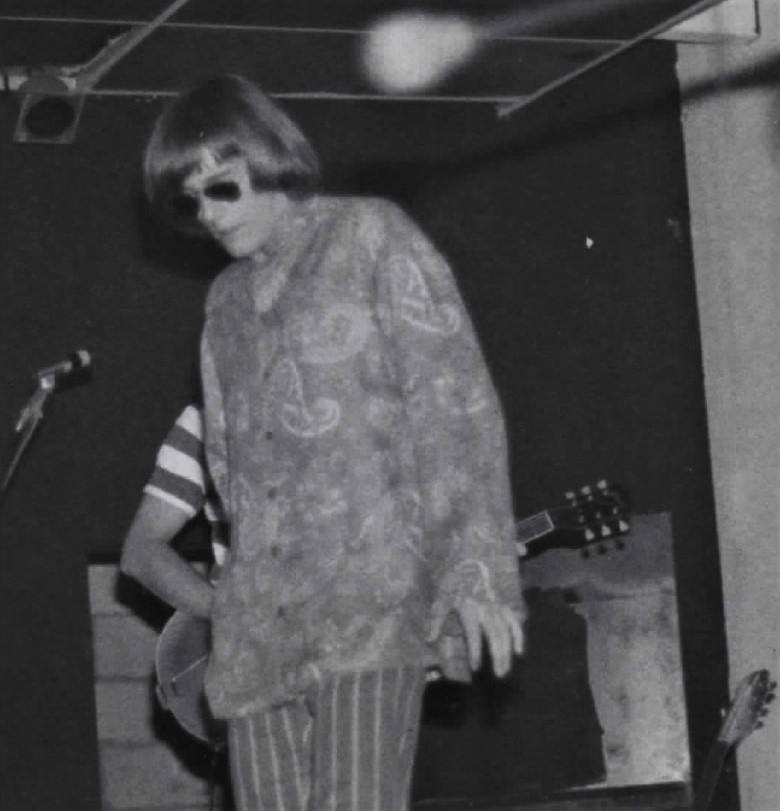
How do you recall the days when you played with the early version of the Alice Cooper Band?
We did lots of shows together and were very friendly and supportive of each other’s group. We smuggled liquor into a few dressing rooms we shared at different venues. I remember at “The White Room” in Buena Park, Bob Ellis, our drummer, asked Vince/Alice, “Alice, do you believe in God?” The response, quirky, like their music at the time, still tickles me, “God who?” he asked. We were in our shared dressing room at Marina Palace when their group signed the management deal with Shep Gordon, and were invited to, and attended their debut show with Zappa and the Mothers, at Cal State Fullerton.
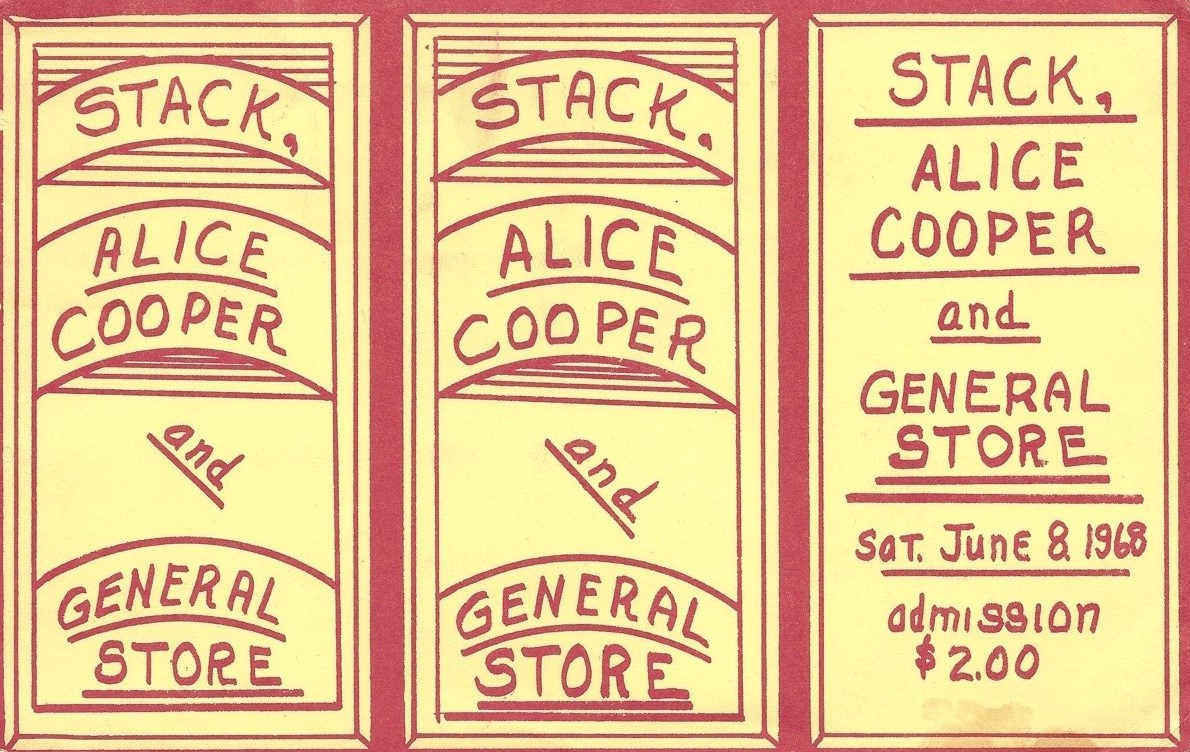
“The Hendrix gig was memorable”
You actually played with “The New Yardbirds” (Led Zeppelin) and Jimi Hendrix Experience? How do you remember it?
The New Yardbirds gig was when we were brand new as a band. Chuck Berry (no, not THE Chuck Berry) was still playing bass for us. The venue was The Purple Haze in Riverside, CA, I believe it was a bowling alley converted to a nightclub. The interior of the club was cavernous with a large, comfortable stage. Please, remember these are recollections from over 50+ years ago, so they may seem sketchy or exaggerated. The New Yardbirds sole distinction as I can remember, wasn’t their music or their dress, but their attitude. They seemed like cocky little pricks. Their roadies maintained the same arrogance. Chuck Berry and I had an uncomfortable encounter with one roadie in the parking lot after the gig, when all of a sudden he pulled a knife on us! Chuck reacted with ninja efficiency. He quickly grabbed a disconnected mic boom arm, spun it helicopter-style, and disarmed the thug. Totally surprised by Chuck’s prowess, he backed off. We continued packing up as the danger had been handled, and headed on our way. Thanks Chuck! The Hendrix gig was memorable. It was our first show with Gould using his new Marshall stack. Rick’s amp along with a white Gibson Flying V guitar, was recently purchased by management for our contract signing. We arrived at the venue, Thee Experience in Hollywood, and entered through the front door. The exterior of the building , facing Sunset Boulevard was painted as a caricature of Hendrix’ head with the door awning opening as if you were walking into Jimi’s mouth. Entering, we were greeted by a very pretty “Hollywood” looking lady in a miniskirt, wearing colored, “McGuinn” type glasses , she directed us across the performance area and dance floor, to a hallway where the dressing room was. The dressing room entrance was a waist-high half door that opened into a very low ceiling room, its “floor,” more like a bed, was strewn with tapestry covered pillows, reminiscent of a scene from an Alice-in-Wonderland dream. But we couldn’t see that initially, as the door was locked from the inside. Jimi had been in the room with a couple of girls for quite a while (overnight we were told). Our road crew went ahead and set up the stage as we waited for access to the dressing room. At least twice, Buddy Miles came backstage, knocked on the door and yelled to Jimi inside, “C’mon man, we’re going on pretty soon, you gotta come out!”. Finally, Jimi popped his head out of the mini-door. He was really wasted. Buddy helped him to his knees, got behind him and supported him from under his arms. He was dangling like a rag doll, and unable to stand on his own. His outfit had stains and spots all over it apparently from various body secretions. As he dangled, one of his roadies stuck a guitar in his hands and suddenly magic happened. His legs straightened and began to support him. His body straightened too. He soon was standing and balancing. Buddy let go and Jimi was on his own. Watching the scenario backstage, Rick Gould was soaking in the whole ordeal. John English, who had set up Rick’s new Marshall stack, was approached by Jimi’s roadie and asked if Jimi could play through his amp. Rick answered back quickly, and sternly, “Fuck no! I don’t want that drunk SOB to touch my shit!!” He instructed English to remove the fuse and fuse cap so there couldn’t be any mistake. They set up another rig for Jimi, he went on and played great!
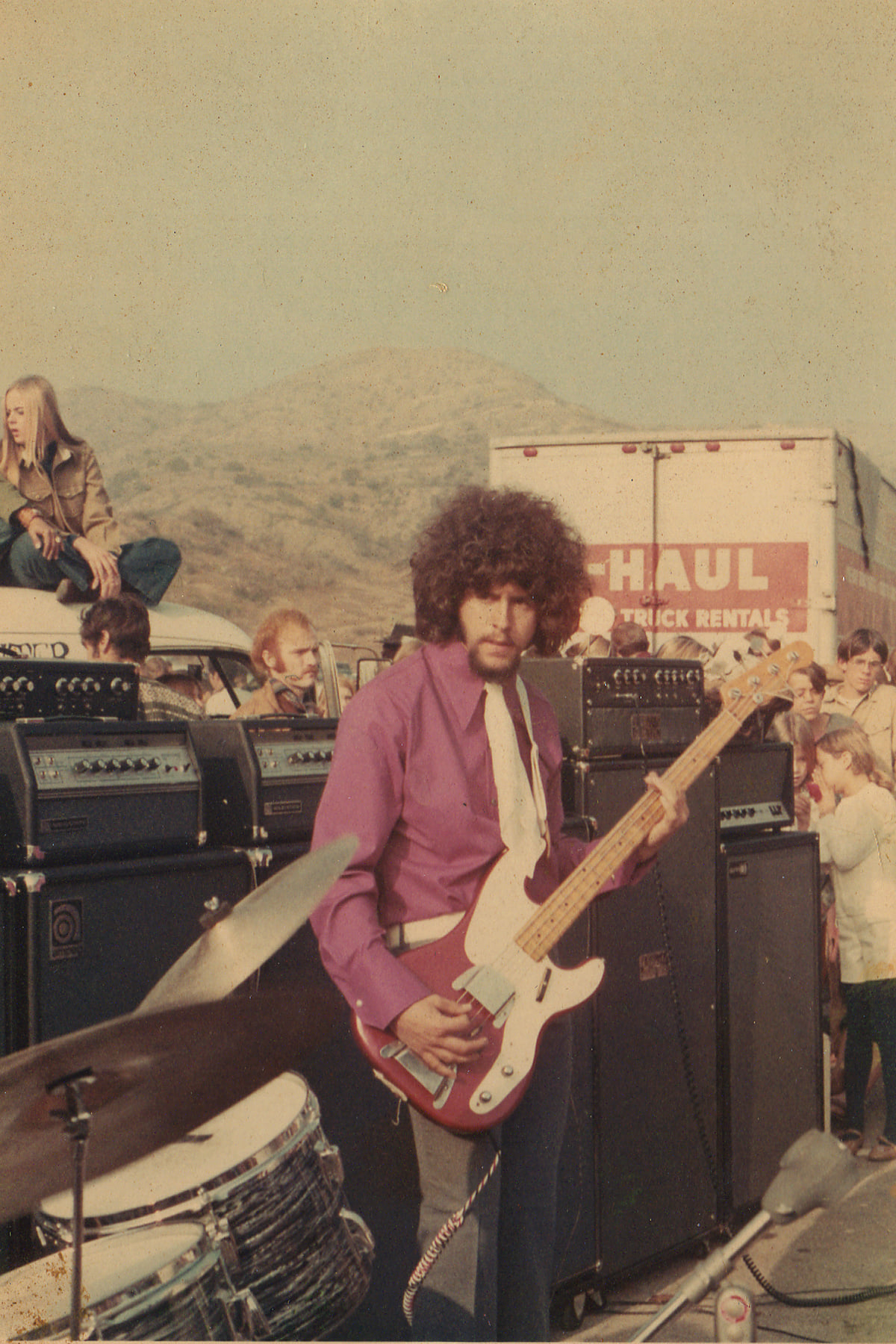
What would be the craziest gig you ever did?
There was a level of professional decorum amongst us that we all expected of each other, so we maintained a certain poise initially. Drinking before performing was acceptable, drugging had not been tested at the performance level, yet…. Our gig with Three Dog Night at the Ice Palace in Las Vegas changed that a bit. We arrived early to the venue and once inside, selected the dressing room we preferred (nothing had been assigned) and moved in. When the Three Dog Night entourage arrived, they were pissed off that we’d taken the biggest and best dressing room, after all they were the headliners . We overheard some of them grumbling in the hallway backstage. Bummer, we weren’t moving and nobody asked us to either. One of our small “entourage” (it may have been Rick Teel (RIP) had brought some capsules of cannabinol with him. He handed me a few. I popped them in my mouth and washed them down with a slug of beer. We were “feeling our oats” as a band due to our recent successes (opening for Iron Butterfly and Jimi Hendrix), upcoming Columbia album, and Pepsi TV commercial. The Ice Palace was an actual functioning ice rink and home to the local pro hockey team The Las Vegas Gamblers. The rink was transformed for rock shows by adding wooden risers for a base, with rows of seats, a large stage with a central drum riser, portable stairs, and large rubber mats behind the stage where the ice was still exposed. Our show began with a bang. I believe we started with ‘Everyday’. The audience was on our side from out of the gate. The drum riser was about 3 feet above the stage I was on, and the cymbal mic boom weight was around 2 1/2 feet above the drum riser. About 30 minutes into our set I began getting real buzzed from the cannabinol, and began head-banging with the drumbeat, facing Bob Ellis and just plain rocking out. I had had a sensation of something warm running down my face. The audience began cheering louder and louder. I opened my eyes and realized I’d been banging my forehead on that mic boom weight. The warmth running down my face was blood! The audience had taken it as part of the act and were ecstatic! We finished our set to thunderous applause and cheers.
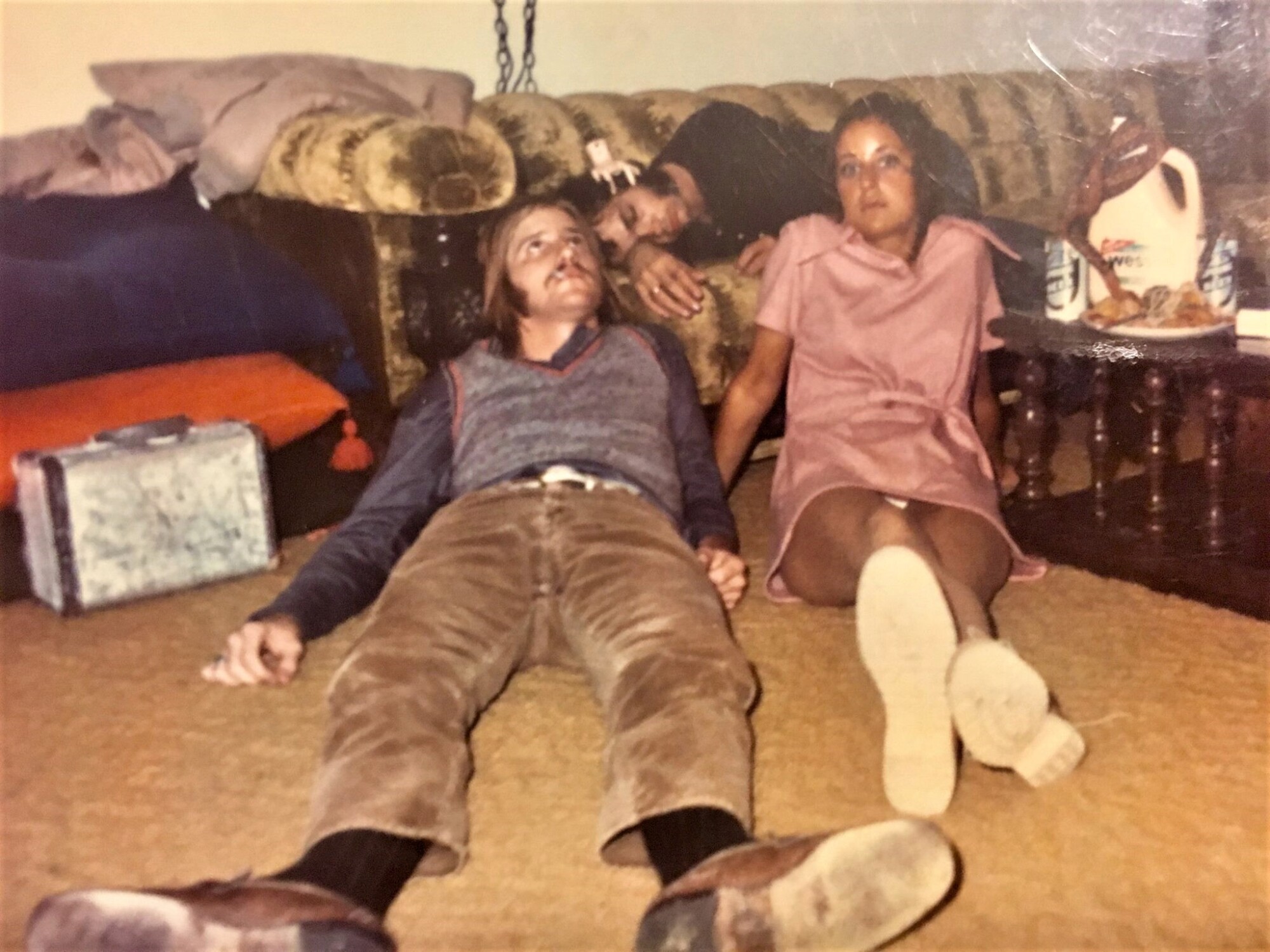
Would love it if you could go in-details about the circumstances surrounding Mike Curb’s Sidewalk Productions and Charisma Records.
Steve Hoffman was a man of many hats (later to become a world renowned mastering engineer). One of those hats at the time was that of a talent scout for Clancy B. Grass III. Clancy had an association with Mike Curb’s Sidewalk Productions. Steve Hoffman saw Stack at Marina Palace in Seal Beach, CA. Stack was one of the most popular groups (along with the Alice Cooper band) playing there at the time. Steve was impressed by Stack and spoke with band leaders Bob Ellis and Rick Gould about our current management, et cetera and then approached Clancy and hyped us to him. We were under a verbal agreement with Bill Robertson, owner of Marina Palace, Seal Beach, CA., but had no written contract. When we were presented with the offer to sign with Sidewalk Productions, we jumped at the chance. The contracts being offered were ironclad and for a term of 8 years (which apparently was common at the time). Sidewalk Productions and Mike Curb were well known sought after entities, so it seemed very promising. As we were all younger than 21, all our parents were required to attend a Superior Court hearing to approve the contracts. Clancy Grass ended up as our direct liaison with Sidewalk. I don’t ever recall having met Mike Curb directly. Following the signing, everything began moving quickly. We were assigned an agent with the William Morris Agency, who also handled the actors for TV’s Mod Squad. We were booked into The Whisky with The Blues image, The Fig with The Byrds, Thee Experience with Jimi Hendrix and Buddy Miles. We were sizzling!
What kind of gear, effects, pedals, amps did you have in the band?
Rick Gould was a tone monster. He understood, much like Brian May of Queen, that a good portion of a great player’s stature is “tonal identity.” Buddy Clark used Sunn heads with cabs loaded with Altec 12s and JBL 15s, Kurt used a Sunn head and dual JBL 15 cab with no pedals and an American Epiphone Casino guitar. Rick used Sound City, Hiwatt, and Marshall amps when playing live. On the ‘Above All’ record he used a little 10 watt amp with the volume wide open for distortion and sustain (I seem to remember Laurel as the brand name). Ricky Elbert Gould (RIP) had extremely strong hands, vice grips. He got the richest tone out of his guitars by stringing them with heavy gauge nickel strings. The sets were 17-62 gauge. I remember several would-be self-indulgent “rock star” type guitarists asking to sit in with the band after admiring Rick’s tone (probably familiar with 9 or 10 gauge sets). Rick would hand them his guitar, smile, and watch them freak out at the resistance of the girders he was playing on. No one ever played a song with us on one of his instruments. Rick’s guitar tech, John English, later became a world famous luthier as a senior member of the Fender Custom Shop. Rick’s many guitars included, during my Stack tenure; a new Gibson Flying V, a Baldwin Baby Bison, a gold top Les Paul, Gibson Firebirds (both normal and reverse), two Gibson SGs, and a couple of Fender Strats. But the only constant in his distinctive tone arsenal was a distortion pedal. I can’t recall the brand name, but etched on the bottom of the pedal was “J Beck Yardbirds”.
Did you earn enough at the time to only dedicate your time to the band?
Great question – We all still lived with our parents when we started so money wasn’t a major consideration yet. As we became more popular, we started booking an early show, and then a late show at a different location, kind of double duty. Each venue paid us $100-125 each, so on a good weekend with 3-4 shows, we did OK. Just as an example, in the late ‘60s, my father was the VP at Home Savings & Loan. He was paid about $250 a month. We were a middle class family with that level of income.
Would you share your insight on the albums’ tracks?
Rick was the predominant writer, however, I assisted with the writing on three of the songs. I wrote the lyrics for ‘Cars,’ and bastardized the lyrics on ‘Da Blues’ from an old Paul Butterfield song. Rick brought in the music for ‘Valleys’ but he wanted the vocal line to follow the guitar riff. It sounded hokey. I suggested we cut the melody to half time counterpoint. We wrote the tune together with Kurt in my parents’ living room. I added the falsetto “aah” part. and ended it with a ballsy scream which Clancy edited out of the final mix. Rick took credit for it, but it was written by the three of us. ‘Time Seller’ was my favorite cut on that record. The guitar intro riff was very reminiscent of and the same caliber as the Beatles’ ‘Revolution’. My vocal was strong and relevant and Kurt and my harmony at the end (intentionally out of meter) I think illustrated our creative bond. I remember the session when I recorded the vocal on ‘Only Forever,’ while Rick glared disapprovingly at me from the booth. As “pot” began weaving its way more and more into our culture, there began a divide between the old diehard “boozers” and those experimenting with smoking weed. Rick had maintained a staunch stance in opposition to smoking it. Kurt and I on the other hand weren’t deterred by the “Reefer Madness” mentality being marketed by the US government’s propaganda. My sister Sally had slipped me a couple of joints of this new “mega-weed” called Acapulco Gold. Kurt rode with me to Hollywood in my recently purchased car, a Sunbeam Imp. In the small storage area behind the back seat we carried a blonde bandmaster cabinet to dub some rhythm guitar tracks, it barely fit. We pulled up in the alley behind SunWest studios to unload the cab, and I lit one of the joints to get a buzz on before the session. We attempted to remove the cabinet and began to realize that we were getting pretty high and it was affecting our coordination and dexterity. We began laughing hysterically as it had become more difficult to get the cabinet out of the car in the dark. The alley was part of a Hispanic neighborhood and we could hear the neighbors complaining in Spanish about our interruption in their normally serene, quiet neighborhood. Entering the studio, Rick could tell we were really high and immediately copped an attitude. First thing up was my vocal. I was uncomfortable because of Rick’s vibe. Oh well. If you listen closely you might get a contact buzz…haha! ‘Da Blues’ was cut at Doug Sax’ Producer’s Workshop as George Harrison had booked SunWest studios to record Jackie Lomax the next night, so we moved down the street. It was cut “live” in the studio but there was an engineering screw up so I redid the vocal in a single take once again, hence there’s a ghost vocal on the record (headphone bleed). The “audience” on the track is multi overdubs by our group of techs and roadies; Vince Basse, Kevin Prewitt, Rick Teel (RIP “Doober”), and John English (RIP). It gives the impression that we’re performing in a gay bar! Ha ha. The other recording from that session that is noteworthy was the Pepsi Cola jingle that was to accompany our filmed TV commercial. When we entered the studio that night there were 3 large television/movie type cameras with operators to capture us during the filming of the TV commercial. We were to be the 1st rock band to do so. The front page of the Hollywood Press magazine was, “Columbia signs Stack”. Pepsi had been looking for a young upcoming rock band and it ended up being us. We never received a copy of the jingle we wrote “on the spot”. Columbia offered us $75k which in 1968 dollars was equivalent to about $500k in today’s money. Clancy, believing he had the situation under control, pressured Columbia for an additional $75k for a promotional budget. Columbia balked. Clancy pressured, and the deal fell through. The release of the Pepsi commercial was contingent on the Columbia deal and got shelved and we were back at square one within a couple of days. Clancy tried to keep us happy by the release on Charisma Records. We didn’t get the money from Columbia or the national TV commercial from Pepsi! No, we weren’t happy!
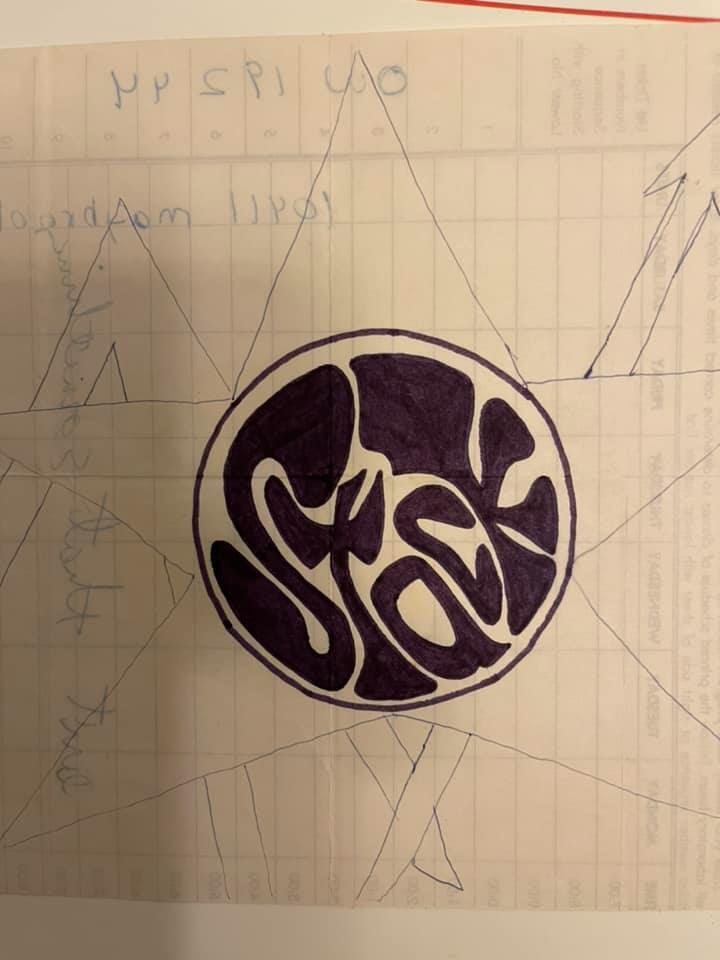
How pleased was the band with the sound of the album? What, if anything, would you like to have been different from the finished product?
The band members were both ecstatic and bummed. Ecstatic because we were offered a record deal from a major label. Bummed because that deal, after all the hype, fell through and by the time the record was finally released, the material was way stronger and more polished than what was on the recording. We’d become a powerhouse, and the record no longer represented our capabilities!
Tell us about the cover artwork.
Maxfield Parrish – “Stars” the painting was selected by Clancy Grass. In those days new artists had very little input on cover art or music inclusion / exclusion. Those were all management decisions. I’m pleased however with his cover decision.
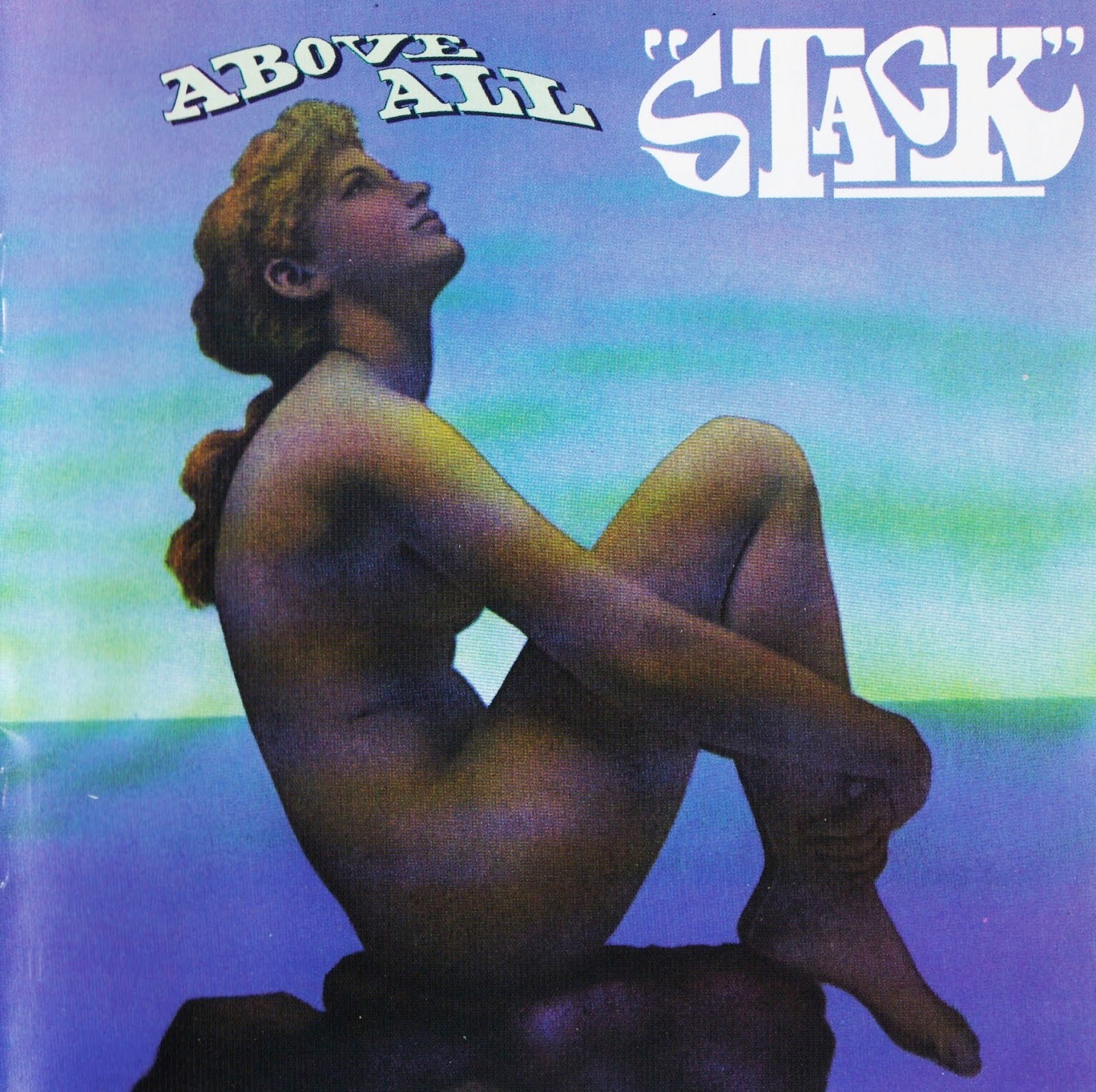
How long did you play until you decided to disband because Clancy had taken so long to finally release the album.
The delay in the release of the album had ripple effects in other areas. Our successes, attitudes, and daily behaviors were putting pressure on our living arrangements. We were young and hungry to hang out with chicks, party, et cetera and being at our parents’ homes put a damper on some of that. To move out required steady money. The band had been playing the same circuit, and material, for primarily the same audience for 5-6 months. The material remained the same because it needed to be polished for the shows we were expecting after the album release. Our performances were very high energy and physically demanding. On some nights I could lose up to 5 lbs during a show. I knew our impact and growing success was based on that concept. Management, along with working on the release process, had been scouting venues for us. The Cuckoo’s Nest, in Costa Mesa, CA offered us a “house” gig playing Wednesday through Saturdays from 9-2am nightly. That seeming solution posed a few more problems.
#1 The first was this. Being successful because we were a high energy group and known for our impact, how could we possibly maintain that energy level for 5 hours per night?
#2 We’d only done 1 hour shows. We had 1 soloist, Rick. No matter how great he was, to fill a 5 hour night with just 2 lead vocalists (me and Kurt), and a single lead guitarist, we’d be boring and redundant. I expressed my concerns to the guys and Clancy.
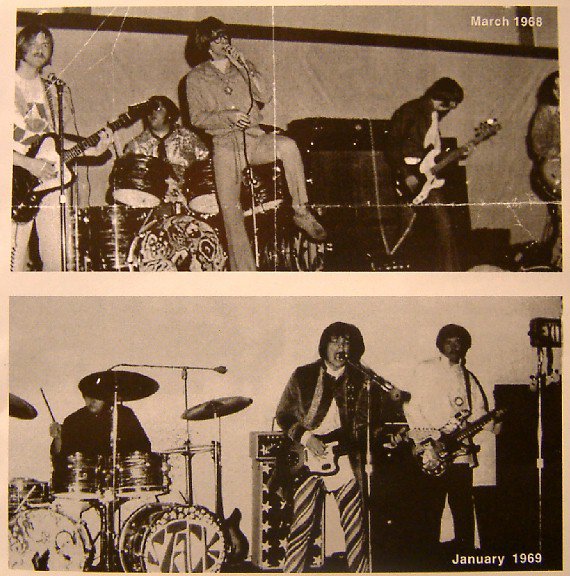
Apparently, the guys didn’t have my concerns, but Clancy made an effort to fix what he could also see as a problem. Finnegan’s Rainbow, soon to be known as, The Cuckoo’s Nest, set up an audition night. Clancy’s secretary, Nickie Blue, had just met an LA newcomer that played harmonica. He was looking for a group to join. His name was Lee Oskar! Clancy and Nickie brought him down from Hollywood to jam with us in an attempt to nullify my concern. Of course he played great, it was Lee Oskar. But the style of our band didn’t gel with a melodic or bluesy harmonica. We were a power rock band that inserted a couple of blues songs a night and Lee needed more theme oriented parts to play, which he later found with Eric Burton’s War. Meanwhile, in spite of my feelings in the matter, the club hired us, and I was faced with a major decision. We had a few weeks until the booking started. I pleaded with the guys to not take the gig, but it was as if it was falling on deaf ears. I had no choice but to leave, so I did.
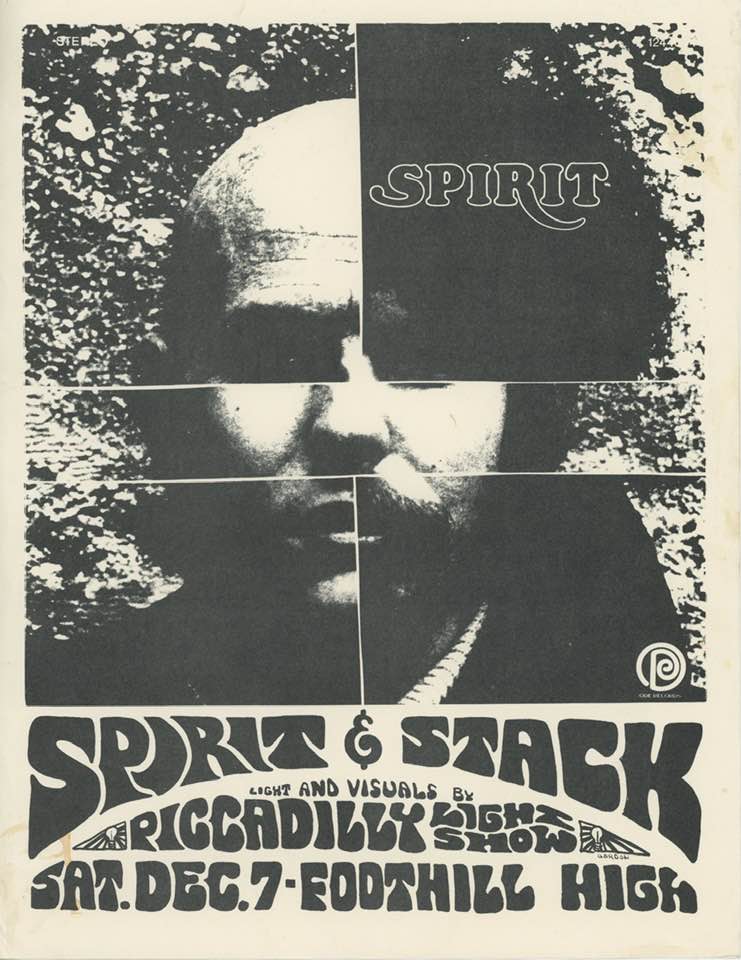
I would love it if you could share some further words about other band members of Stack and their background. What did they do after that?
Chuck Berry (no, not “The” Chuck Berry) was the lone player that was not part of the Stack/Wabash Spencer merger. After the group decided to part ways, I saw him a few times at a nightclub where I worked for a while. I have a feeling that being let go by the band took the wind out of his sails for a long time. Sorry Chuck… Buddy Clark bought an upright bass and went on to play with internationally renowned blues man, James Harmon. Harmon said of Buddy, “He was the best bass player I ever worked with”. After a few years Buddy died from having a cancerous mole removed. At his twin sister Kathy’s house, for his “celebration of life,” she’d displayed his blonde upright bass in the living room. Members of James Harmon’s band were present as well as members of many of the nightclub groups he’d worked with. I was there and Rick Gould called in from Albuquerque, where he was living, caring for his aging mother. Rick, played with me in Ruby Wheeler, which following its inception as a recording act, had morphed into a nightclub band adding Kurt (now a bassist). About five years ago he slipped in the bathroom at his mother’s house, hit his head on the sink, and unconsciously bled out. The last time I remember speaking with Kurt was at the Stack gathering at Rick’s house in Huntington Beach in 1979. I hear through the grapevine that he’s playing or at least practicing again. I believe he lives in Albuquerque with his wife and son.
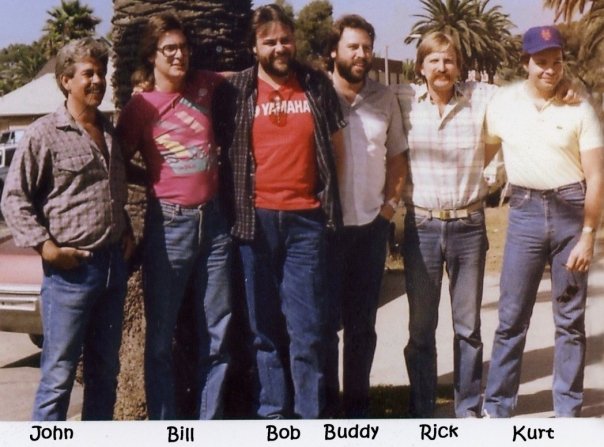
Would love if you could share about Om Hill Candles, that seems like a small community of people with common interest…
Right about the end of my involvement with Stack, I’d rented a little 2 bedroom ranch house on the outskirts of Fullerton/Placentia. It sat on a 2 acre dirt lot, far removed from the slowly creeping housing tracts of suburban Orange County, CA. We could still hear roosters welcoming the morning on the edge of suburbia. That property, and our “hippie” appearance seemed to attract societal deviants. One of those deviants was a hippie named Ron Perfect. Ron was a few years older than the rest of us, and had experience with communal living, but most importantly, he’d been schooled in, and successful with candle making. The idea that we could move, and support ourselves with a line of molded, scented, multicolored candles became a very prominent “group” dream. It became the topic of most of our conversations around the little house in rural OC. “We,” (my pregnant girlfriend, and a group of close friends and Stack associates, and our dogs) decided to form a “community company”. The Stack members had decided to disregard my list of concerns, and I in turn, decided to join the hippies. I contacted my landlord and gave notice. We immediately re-located to a small out-of-business almond ranch on a hilltop in rural Paso Robles, CA. There was no internet or cell phone communications back then, so it was easy to disconnect, and having been disrespected, I did. The new community members purchased molds, wax and wax additives, wicking, scents, and melting vats (melters), and set up in the building that resembled a garage, next to the main house. As an older building, we noticed pretty quickly that it wasn’t insulated. We’d have to pour wax at night so it would be cool enough for the candles to set up as the Central Coast sun was quite warm in the afternoon. The immediate acceptance and praise for our candles as “art” helped raise our expectations and confidence in presenting our products to fine galleries like Nepenthe in Big Sur, as well as head shops in San Luis Obispo and Carmel, but the police had caught wind of our group’s whereabouts, and began harassing us. Apparently, law enforcement agencies statewide were warned to be on the lookout for hippie groups because of the Manson Family’s deeds and reputation. The sheriff began visiting us on a regular basis. Ron Perfect was a draft dodger and headed north to Canada.
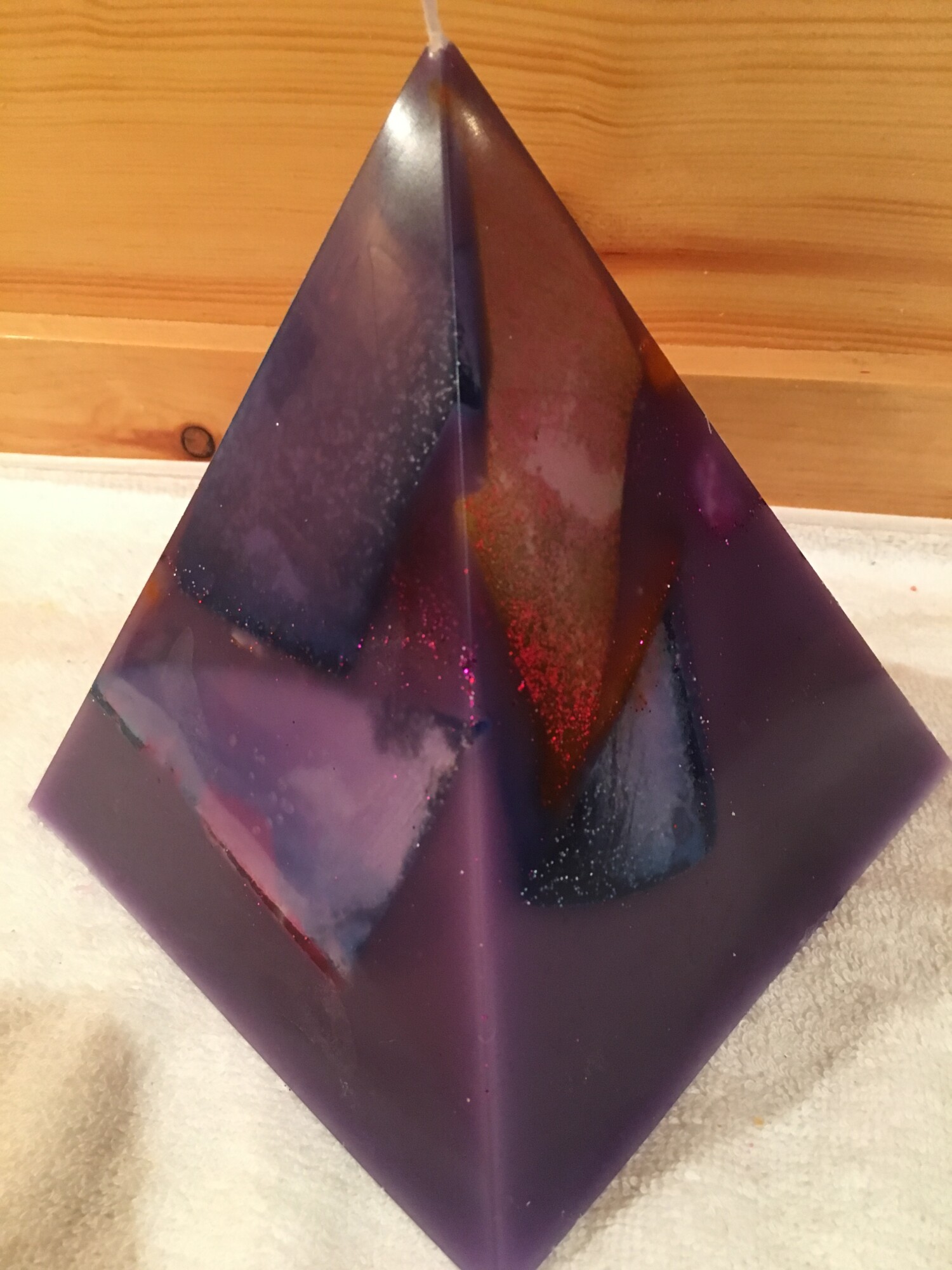
The sheriff’s office made it real obvious during their frequent visits that we weren’t welcome in Paso Robles, so our living arrangements needed to change. We chose the San Bernardino mountains as our destination, Running Springs for our dwelling, Arrow Bear for our shop. We began a full fledged assault on the marketplace. We opened a retail outlet in a repurposed 4 car automotive garage building and set up our manufacturing facility and display room. We quadrupled our molds and melters. We painted the building on the main Highway to Big Bear a bright day glow orange with white trim. We brought in a leathery to make custom clothing. We hit 4 swap meets within a 50 mile radius of the shop, and we set up a few distributors that visited SoCal head shops. On my 21st birthday we received a shipment of 5 tons of wax from Mobil Oil. My parents had decided to visit that day for my birthday. My father and I weren’t close as he’d done everything he could to discourage my music career, so he really had no clue as to my business acumen. He wept openly observing me facilitating everything on the grounds of our business. He realized he didn’t know who I’d become. He was proud and confused. The Om Hill candle company was thriving. To find out about the demise of the communal partnership, there’s more in my upcoming book.
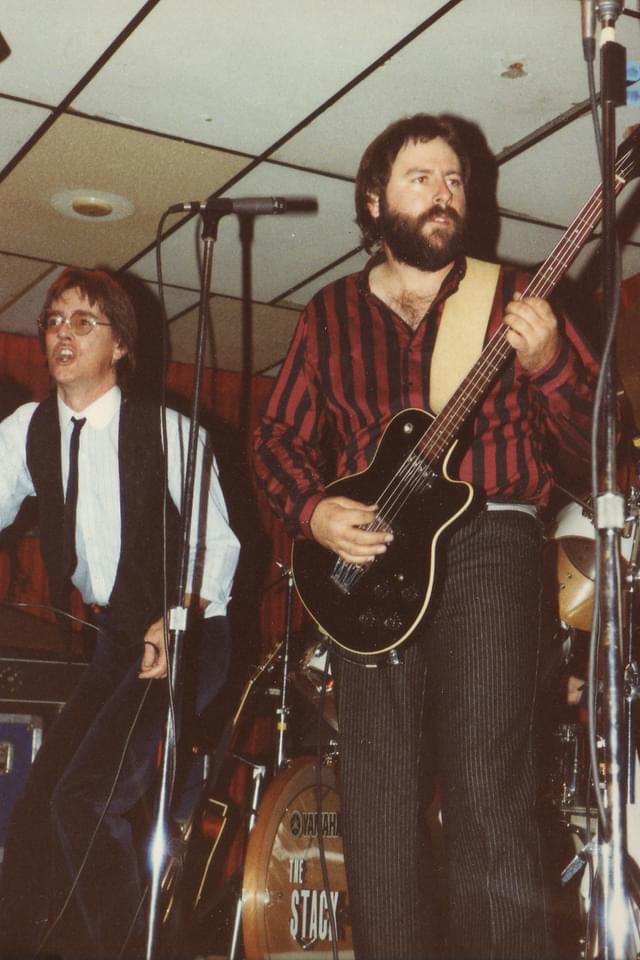
I would love it if you could speak about the solo album you recorded at the time?
I’m happy to fill you in. Having landed in Running Springs, CA, after our run in the Central Coast, we began to settle in a bit. During our stay in Paso Robles, I’d been practicing guitar using the finger picking style Frank Moore had shared with me. Outside our house, was the forest and I found that sitting on a log picking out “ditties,” melodic little segments, I could gather an audience of forest animals. Jays, chickadees, squirrels, and chipmunks showed their appreciation by their presence. I gauged the validity of the material I was writing by forest critter audience size. As if by fate, my old bandmate, Frank Moore, moved in across the street from our house. I played some of my newly penned songs for him. He immediately accompanied me with melodic enhancements and we were off on a new musical journey. We took the new product to my previous producer, Clancy Grass, and he agreed to produce an album. Clancy hadn’t seen me since Stack. My physical appearance had changed considerably. I was a full blown hippie with long straight light brown/blonde hair down to my waist. Clancy pictured an album cover with me, standing under a blue sky, with a staff in my hand, in a field of wheat, with gently wind blown hair. The only word above my head, in bold – SHEPPARD . When I was given a reel to reel copy of the recordings, (after the addition of the flute), the box had one word written on it, in black marker, my last name. Blindly I hadn’t realized that Frank’s name wasn’t mentioned. A while later I lent Frank the reel to listen to. It was returned with some additional wording on the box in black pen – & Moore. All of the material on the album was written by me, but for the lyrics on ‘Was it Yesterday?’ written by lifelong friend, Jerry Beougher, and ‘Children of the Sun,’ written by Roger Dutton, a close friend of Jackson Browne. We finished recording the night of February 14th, 1970. A month or so later, Frank and I did a guest spot at the Golden Bear in Huntington Beach. Then all hell broke loose. There was trouble in Paradise, and a few months later the candle company dissolved and we all split.
Do you think there’s still a master somewhere? It would be wonderful to release it.
I once had the only reel-to-reel master that I was aware of. I loaned it to a friend, Clarence “Butch” Davis (RIP) and it apparently was lost when his family moved from their longtime Anaheim residence. I go into the writing and recording of the songs for that record in depth in my upcoming book. The working title is, “Missed by Thaaaat Much!”. Incidentally, the recording was finished on the night of February 14, 1970, my first daughter, Joey Rain’s birthday! I wasn’t pleased with the final product as Clancy decided to record a flute on all the songs. Don’t get me wrong, I like flute, but the player he hired didn’t compliment the phrasing or the structure of the songs, and played through intended breaks in some of the tunes. I’m aware that copies on 8-track were sold at the old Orange Drive-in Swapmeet – 50+ years ago. I haven’t heard the stuff since then.
What about Dr. God? Fun fact, it featured Steven Seagal. What was he like back then?
Steven was a big Stack fan. He was the founder and leader of the Dr. God band and had already chosen the players and material before he’d asked me to sing with them. He rented an older craftsman style house near Fullerton College and lived with two girls, Donna, and Celeste. He had kind of a “Svengali” influence on the girls. The musical material for the group was Stuart Paul’s ‘Popsicle Planet Suite’. Stuart (RIP) was the “Schroeder” of the local musician scene.
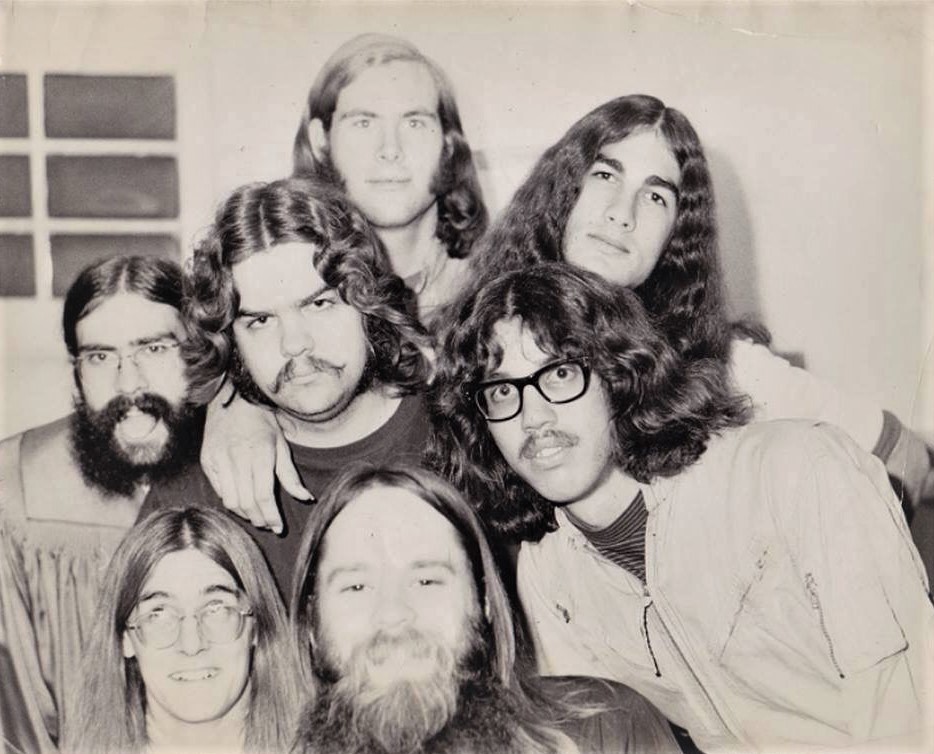
A very talented pianist, singer, and writer, but wouldn’t know what “cool” was if it bit him in the butt. The band included a cellist, two violins, bass, drums, guitar, piano, and finally me up front. After returning to California following my coast to coast run through Canada, we leased a 54 acre property in Silverado Canyon, CA, Wildcat Canyon Ranch. My old bandmate, John Skelton called and got me a gig singing with a nightclub band in Anaheim, so my chops were up when Seagal asked me to join Dr. God. Meanwhile, I was in a relationship with Joey’s mother, who lived on the ranch with me, but Steven’s roommate Donna really caught my eye and not only did he notice, but he dangled her in front of me to ensure I stayed with the band. I did until its conclusion. Steven remained a “close” friend as long as I served a purpose for him. Our show at Fullerton College was about a month away. We needed rehearsal and plenty of it, and saw each other almost daily. He came out to Wildcat and hung out. I drove into Fullerton (about 30 miles), and hung out. Steven was the drummer in this band, I’d been on stage with the best around (Buddy Miles, Aynsley Dunbar, Bob Ellis), I wasn’t impressed, but I’d committed to do the show. Our group sounded like ELO but preceded them by 2-3 years. The other act on the bill was Birtha and it was nice to see the girls again. One of our two guitarists was Steven Anderson (RIP), chief engineer at Capitol Records, so there is a high quality recording of the show somewhere in SoCal! Anyway, the show was great and as was intended from the beginning disbanded after… Fast forward 40 years, I’m working as a factory rep for many different companies. I have a business partner who knows through the grapevine that I have a history with some rock stars and one movie star, Steven Seagal. As my business partner and I were manning a booth at the annual NAMM trade show, I noticed a large entourage approaching where we were standing, I recognized it was Seagal and stepped into the aisle to say hello to my old friend. I just looked him in the eyes, smiling. I had my name tag on, but he never looked down at it. Suddenly, he scrunched up his face and presented his movie-tough-guy-look and barked at me, “Am I supposed to know you or something?” Embarrassed, I uncomfortably replied, “Steven, it’s Bill Sheppard.”
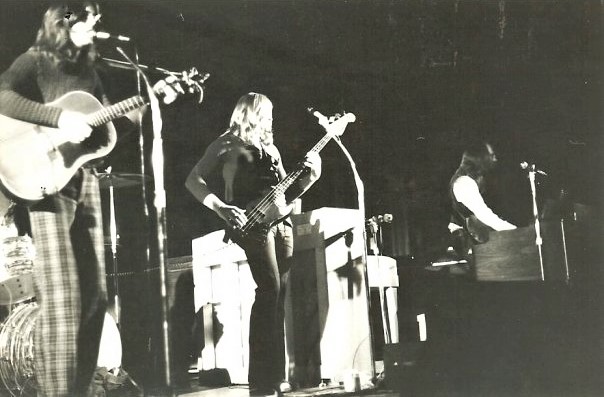
Apparently thrown by his own behavior, he sheepishly added, “Oh Billy, I, uh, still listen to your records all the time.” He then turned, smirked to one of his beefy bodyguards, and they sauntered away, disappearing into the crowd of attendees without speaking another word.
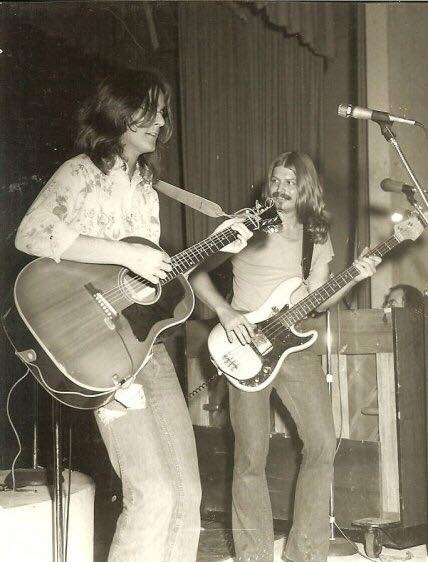
Is any archive material / recordings of the above mentioned group available somewhere?
Yes, on YouTube there’s one cut you can listen to. ‘Good Time Sally’ was written by William David Mohr (RIP)
Lead vocal – W David Mohr
Piano and Chamberlain – W David Mohr
Vocal arrangement by – Bill Sheppard
Background vocals – Bill Sheppard, W David Mohr, Rick Gould (RIP)
Guitar – Rick Gould
Bass – John Durzo
Drums – Leon Becken
Engineer – Bob Stone (RIP) (Zappa)
At present John Durzo and I are in discussions with Roger at Gear Fab Records about releasing 4 studio cuts and 6 rehearsal cuts as an LP of Ruby Wheeler material, with the assistance of producer Jon St. James (Berlin, Stacey Q). I’ll let you all know our progress. Hopefully there will be more unreleased material available someday including of Ruby Wheeler (early 70s), SAM (early 90s), Max Gringo (mid 90s) and Family of Man (spiritual).
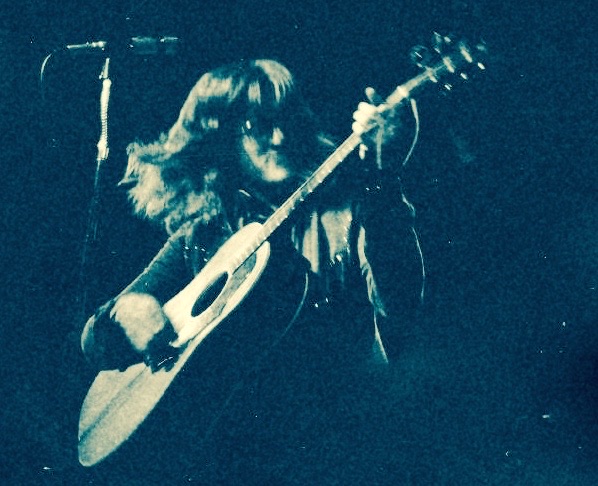
What did you do after that and what currently occupies your life?
Wow! How much room do you have for my response? I made candles, played in groups, got arrested by the DEA in a payola scam, got married, began working in the retail musical instrument business, became a factory rep, recorded a few unreleased albums, got sober, became a national distributor for effect pedals and amps, began writing a book with LA Free Press publisher Steven M Finger (RIP), and I’m now doing this interview!
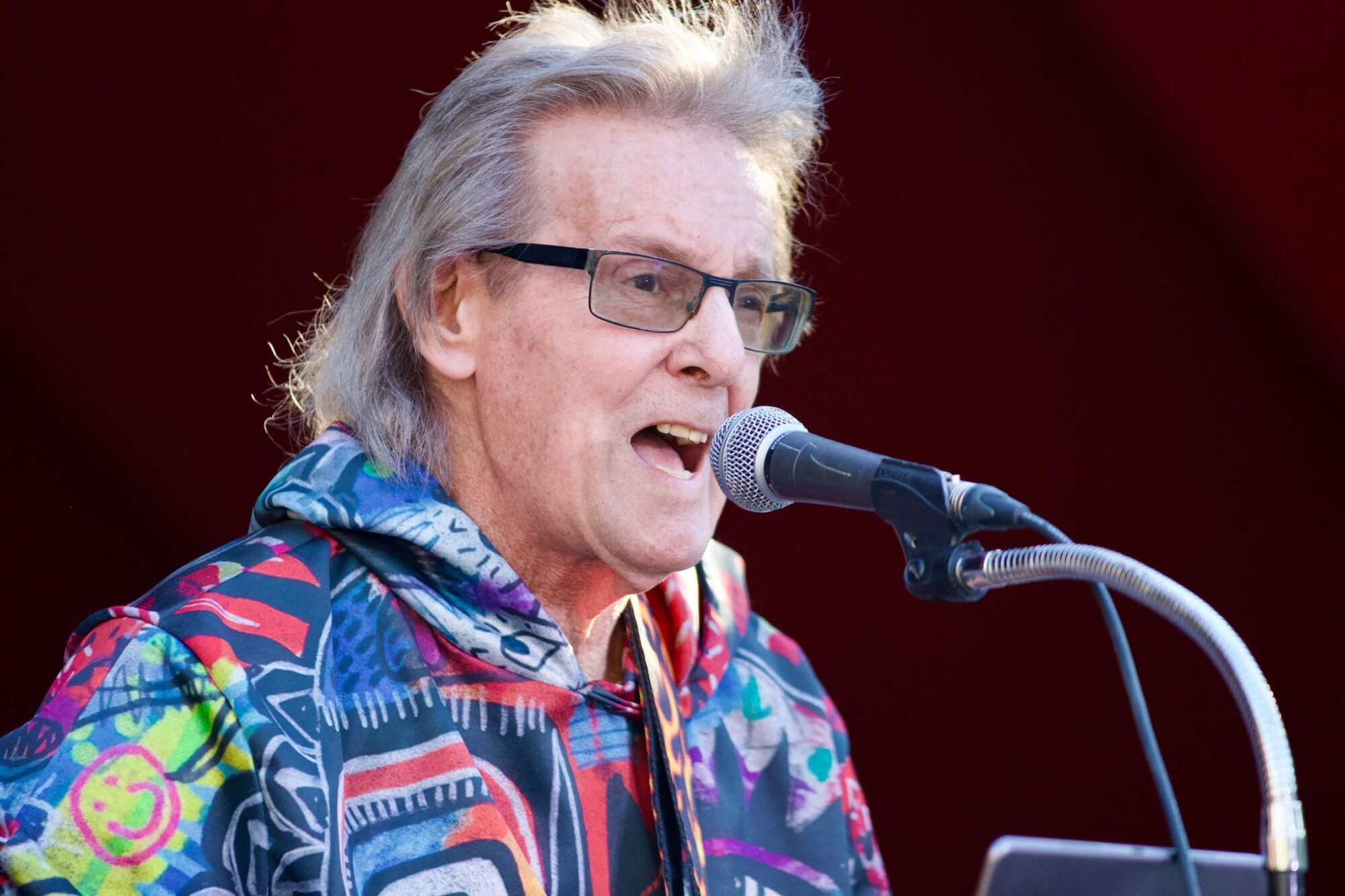
It’s amazing to revisit our interview after 8 years.
Yes, it is. I genuinely thank Klemen and everyone at, It’s Psychedelic Baby! Magazine. You guys started the whole ball rolling for me. You interviewed me first. There have been many interviews since, and I really appreciate the attention and interest. Years ago I was sitting in a bar with one of the roadies from Stack. He mentioned in a conversation about music that I had opened for Jimi Hendrix. We were both accused of being total “fucking liars,” full of shit, et cetera. You guys have given my history viability and notoriety and I’m forever grateful for all of you in this line of work.
In total gratitude.
Klemen Breznikar
Headline photo: Stack at Irvine Park (October 1968) | L to T: Rick Gould, Bob Ellis, Buddy Clark, Kurt Feierabend
Stack | Interview

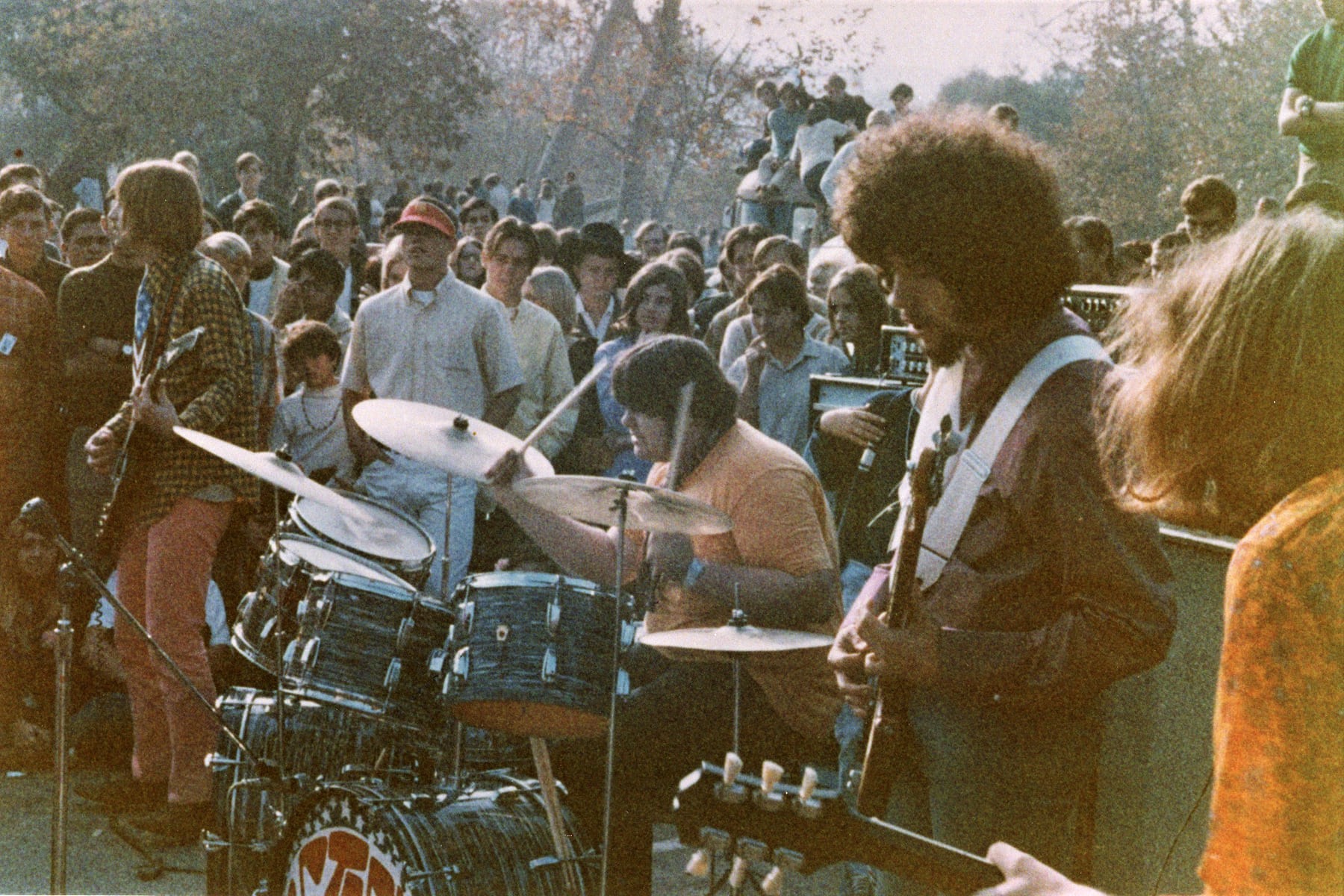



I find it curious that you barely mention Dennis Yarema, lead guitar in the band and on recordings.